Take a walk through this timeline of significant milestones in UMBC’s history — from its beginnings as a plot of Baltimore County farmland to its arrival as a Research 1 university— and you’ll see how this community has lived its values of inclusive excellence from the very start. Welcome to our community of inquiring minds!
Skip To: 1960s I 1970s I 1980s I 1990s I 2000s I 2010s I 2020s
1960s
1960
- The Warfield Commission, appointed by Maryland Gov. John Millard Tawes, issues “A Plan for Expanding the University of Maryland,” which suggests transforming the state’s public teaching colleges (Towson, Frostburg, and Salisbury) into liberal arts institutions and creating three additional university centers.
1962
- A commissioned study, chaired by John Curlett and titled “Public Higher Education in Maryland 1961 – 1975,” offers a plan that focused on functional diversity and independent development of campuses.
1963
- The Maryland General Assembly passes a bill to establish UMBC as one of four additional campuses of the University of Maryland. The legislation is the fruit of four state commissions – dating back to the mid-1950s – that recommended expansion of higher education in Maryland.
- The University of Maryland’s Board of Regents approves a location for UMBC: A 435-acre tract of former farmland operated by Spring Grove State Hospital. The site was suggested by Maryland Comptroller Louis L. Goldstein, and the hospital’s donation of the site saves the state millions of dollars in costs to acquire land for the campus.
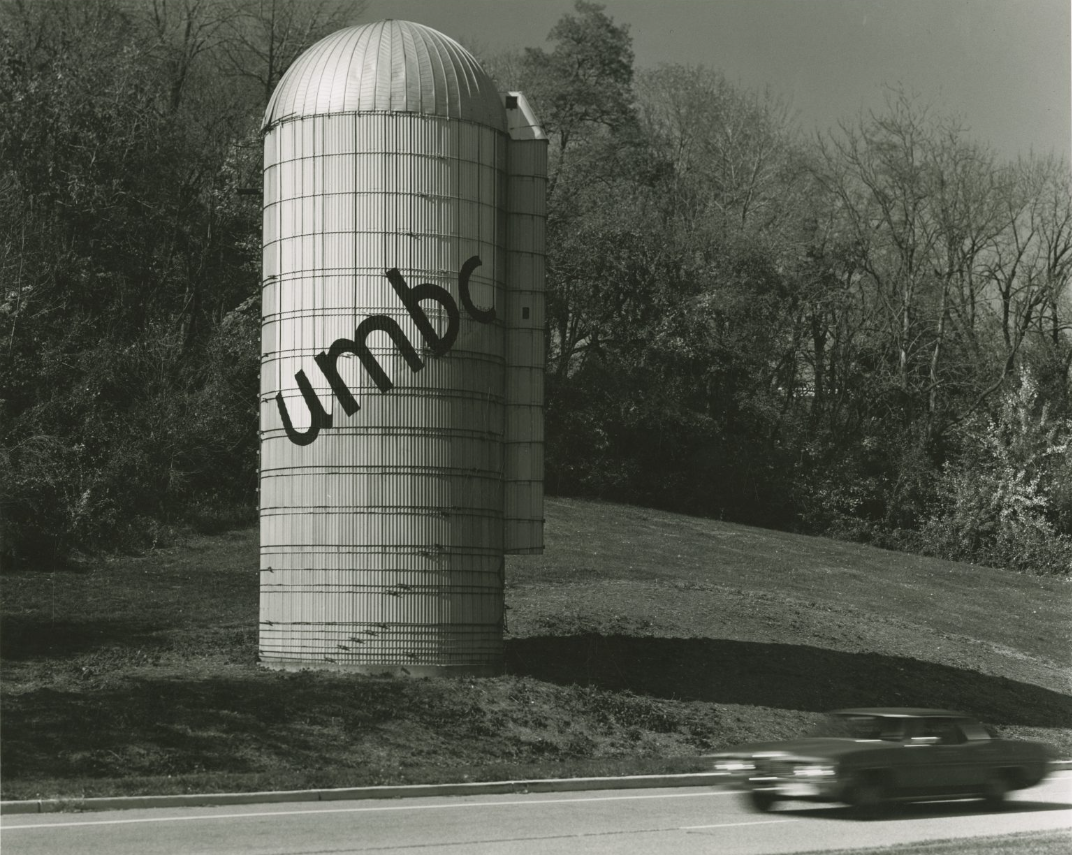
1965
- Albin O. Kuhn is named as vice president of the so-called “Baltimore Campuses” – UMBC and University of Maryland, Baltimore. (In 1967, he is named as UMBC Chancellor.)
- Ground is broken at UMBC.
- David T. Lewis is hired as the first faculty member, heading the division of social sciences. He lectures on world populations, race relations, and even organizes a series of lectures on the energy crisis in the 1970s. Before he retires in 1985, he coordinates a documentary photography project on East Baltimore that becomes a book, Neighborhood: A State of Mind.
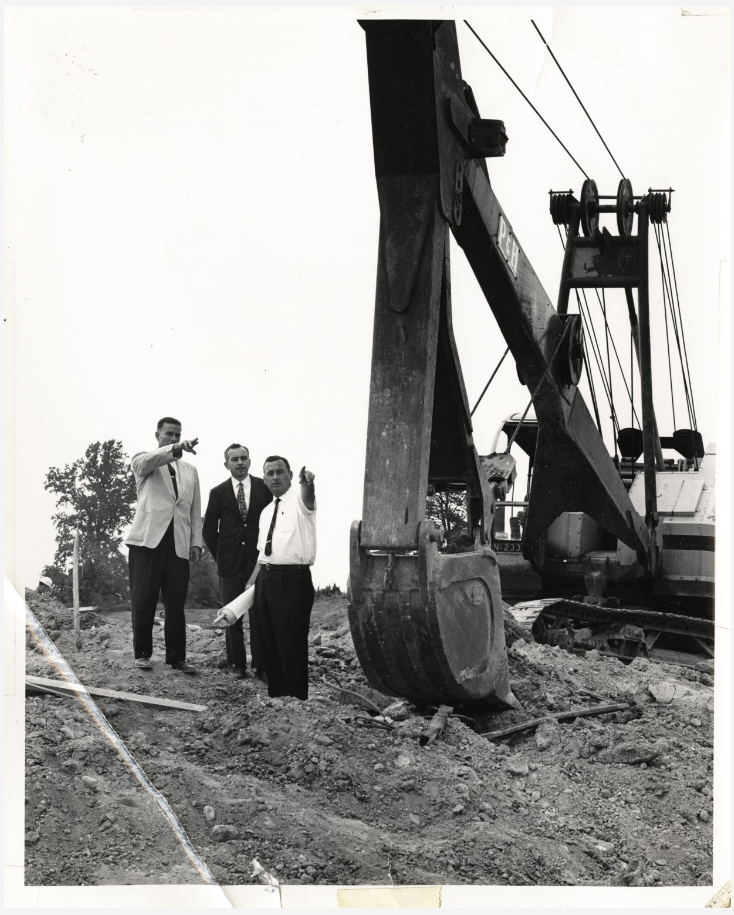
1966
- With applications already exceeding the anticipated 500 students, UMBC prepares for a year of firsts. The entire community is involved in the school’s opening. On the eve of opening day, twenty people show up and spend a Sunday tidying up the buildings, “including one lady who had read that we were opening and just came down to see if anything needed dusting,” Dr. Albin O. Kuhn said.
- UMBC opens its doors on September 19. On its first day of classes, the campus consists of three buildings: Gym I, Lecture Hall I, and a portion of the present-day Biological Sciences building. UMBC had 750 students, 45 faculty members, 35 support staff, and 500 parking spaces. The newspaper that would become The Retriever carries an article written to students by chancellor Albin O. Kuhn: “We do not expect UMBC to be quite like any other campus. Each of you brings individual backgrounds, talents, and education to our new campus. Collectively, you are a different student body from any previously assembled. In working with the faculty and staff of UMBC, make the most of this opportunity to help create a center of learning in which those who give their best in the laboratory and on the playing field develop a brilliance that is the mark of their efforts and the UMBC environment.”
- UMBC’s first student is Gabija Brasauskas Blotzer ’70, English, who chooses UMBC after her housing application to the University of Maryland, College Park is lost. She returns to UMBC twice after graduation to get teaching certificates in English and Latin.
- UMBC plays its first intercollegiate game on November 4, a spirited 4-1 loss by the men’s soccer squad to the University of Maryland, College Park.
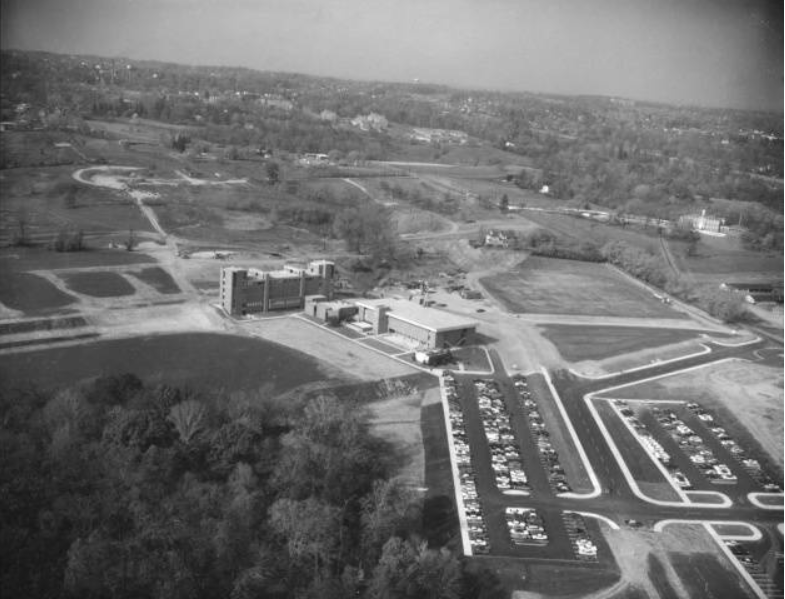
1967
- Students enter a contest to choose UMBC’s mascot, suggesting unicorns, angels, muskrats, and crabs. But UMBC chooses the nomination of the Chesapeake Bay Retriever. And soon after, UMBC receives a donation of a puppy, its first live mascot, who lives at the Catonsville home of Guy Chisolm, UMBC’s first director of the physical plant.
- In April 1967, Otis Redding performs “Soul Sound of 1967” at a semi-formal dance in the gym during the university’s first “spring week.” “Awesome Otis is coming!” trumpeted the headline in the Retriever. The concert, also featuring Redding’s twelve-piece band, the Upsetters, is broadcast to overflow crowds in the cafeteria. The legendary soul singer would die eight months later in a plane crash.
- The men’s basketball team plays its first varsity contest after a year on the club level, dropping a 73-63 verdict to Catonsville Community College. The team would finish its first season at 4-7.
- The Baltimore Colts play UMBC in basketball and the baseball team plays its first game. The first varsity men’s lacrosse game ends in defeat to Loyola College and men’s basketball plays its first varsity contest after a year on the club level.
- UMBC announces its first Winter Session. It is the first university in Maryland to offer such classes.
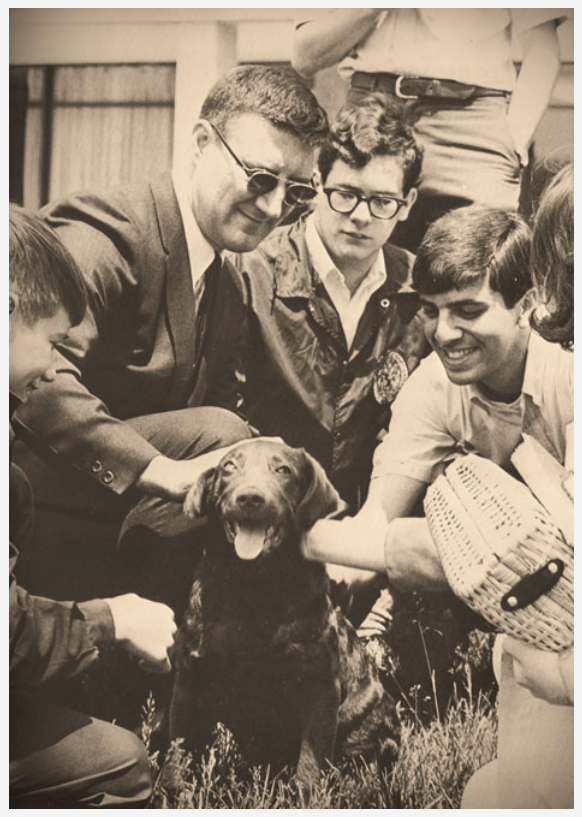
1968
- Phase I of the university library opens.
- Debates spring up on campus on college and societal topics. A “Vietnam Teach-In” is held with opposing viewpoints represented and a “Time Out Day” focuses on issues facing students on campus and in larger society.
- On January 9, the men’s basketball wins its first intercollegiate game, an 84-75 triumph over Eastern College of Commerce.
- Men’s and women’s tennis play their first matches.
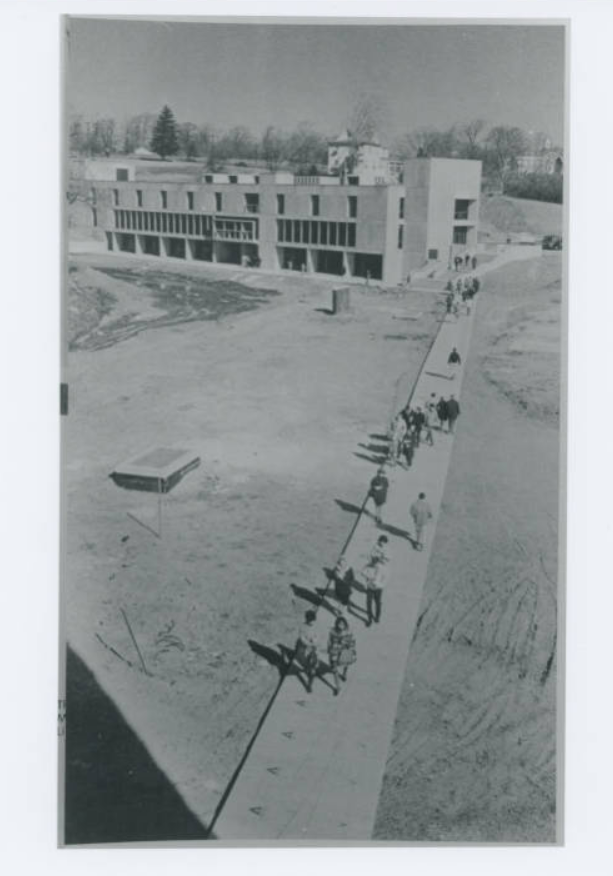
1969
- The campus literary magazine, Dialogue, publishes a series of soft-focus nude photographs by artist Robert Stark, depicting a male and female dance duet. The publication draws criticism from legislators, despite the photos hanging in an exhibit at the same time at the Corcoran Gallery of Art, and creates rifts between UMBC administrators and the university’s faculty and students. Read more in UMBC Magazine.
- The UMBC’s women’s basketball team forms. They play (and win) their first game on January 11, 1969.
- In the year of Woodstock, UMBC’s Sage Players stage “Keep the Peace, Baby,” a rock musical version of the classic Greek comedy, “Lysistrata,” newly translated by ancient studies faculty members Jay Freyman and Walt Sherwin. The play centers around a plot by Greece’s women to deny their husbands sex until they sign a peace treaty to end the Peloponnesian War.
- Professors Walt Sherwin, Jay Freyman, and Rudy Storch found UMBC’s first overseas study program, “Rome: Ancient and Modern,” leading 42 students on a three-week tour that included stops in London and Paris, followed by two weeks in Rome.
- The physical campus continues to grow with the opening of the Mathematics/Psychology building.
Skip To: 1960s I 1970s I 1980s I 1990s I 2000s I 2010s I 2020s
1970s
1970
- Commencement for UMBC’s first freshman class is held on the Quad. In all, 241 students are granted degrees.
- UMBC’s first dormitory opens, housing 118 students. Two more dormitories and a dining hall follow by 1973.
- A sit-in is staged by students protesting faculty hiring and firing policies and the lack of reinstatement of four specific instructors. Students continue with a sleep-in and hold a peaceful rally the next day attended by 300. One result was the Faculty Senate’s acceptance of student representation on committees reviewing faculty and the development and use of an instrument measuring teacher effectiveness.
- In September, UMBC is officially accepted into its first athletic conference, the Mason Dixon Athletic Conference. UMBC remains a member of the MDAC through 1978 and again from 1983-86.
- Following the Kent State shootings on May 4, students and faculty protest, picket and conduct teach-ins. A rally ends with a march to the Catonsville Selective Service Board office and the Catonsville Armory.
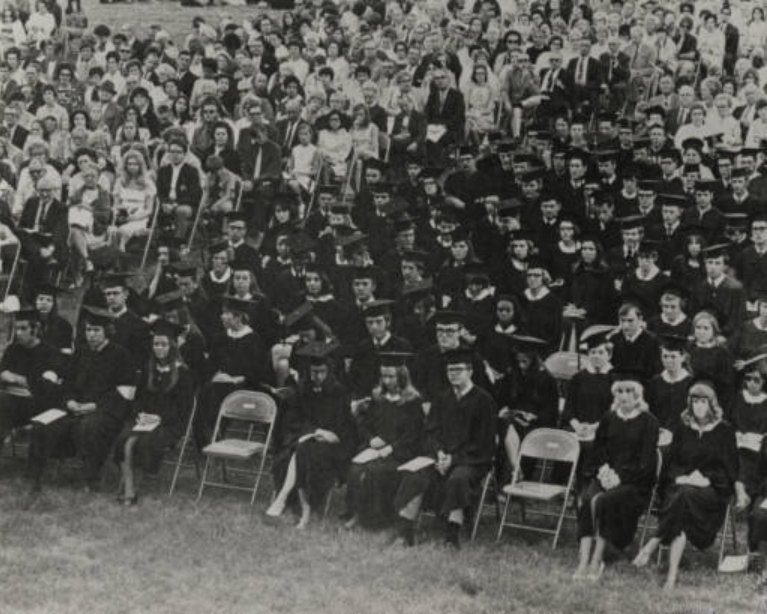
1971
- Albin O. Kuhn resigns. After a nationwide search, Calvin B. T. Lee, the acting president of Boston University, is named as UMBC’s second chancellor for the 2,800 students.
- Thinking big, the Faculty Senate recommends that UMBC seek to increase total enrollment of 10,000 to 15,000 students.
- Lecture Hall II, the Dining Hall, the Chemistry building, Dorm II (Chesapeake Hall), the physical plant building, as well as the campus greenhouse open. In the greenhouse, plant biology students and professors have studied plant immunity, drought resistance, and the development mechanisms of green algae.
- The Fine Arts, Social Sciences, and Administration buildings open.
1972
- The Women’s Union forms and the first women’s studies course is offered. Gender, Women’s, + Sexuality Studies majors have gone on to work in women’s health care, equity economics, and as attorneys, teachers, and human rights advocates.
- The fencing team, UMBC’s only co-ed sport, debuts against Johns Hopkins. The program continued for eight years. Now a club, UMBC Fencing provides fencing instruction and competition experience to students.
- The UMBC Symphony is founded by Robert Gerle, a noted concert violinist, conductor, and professor. Gerle led UMBC’s orchestra program for two decades.
- The first computer on UMBC’s campus arrives, a massive punch-card machine. The Univac 9400 took up an entire room, and students waited for days for the computer to crunch the data on their fruit fly study or math equations. The first programming class, in Fortran, is also offered this year.
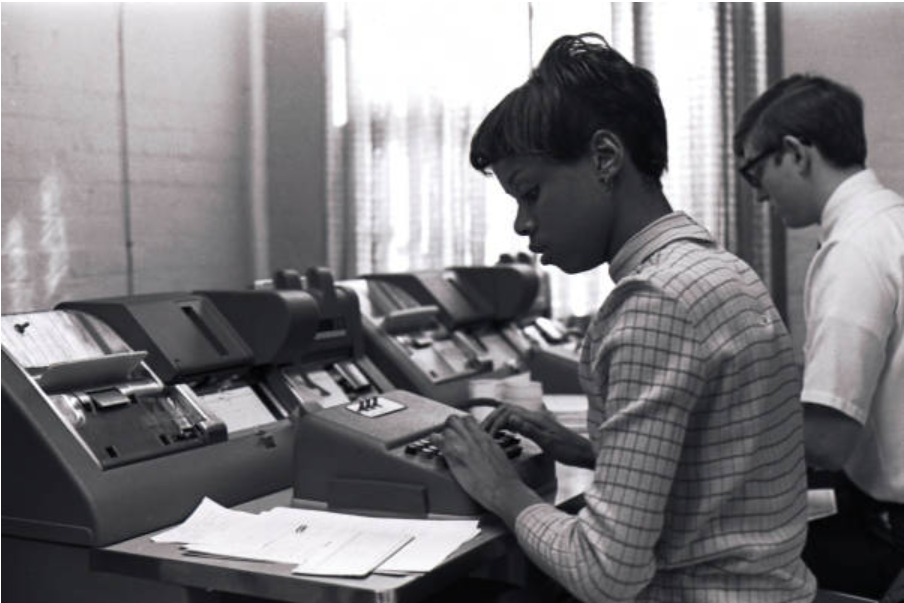
1973
- The Fine Arts Building, the Social Sciences Building, and Administration Building open.
- Men’s basketball wins the Potomac Intercollegiate Conference Championship.
- UMBC Department of Theatre presents T. S. Eliot’s “Murder in the Cathedral,” which is the first university production selected for the American College Theatre Festival at the Kennedy Center.
- Senior class president Steve Rothfield ’73, sociology and education, invites noted psychologist B. F. Skinner to give the commencement address and receive an honorary degree. Skinner’s audience was receptive; psychology was UMBC’s most popular undergraduate major this year, with 140 graduating with a psych degree out of the 543 undergraduate degrees.
- UMBC awards its first graduate degrees.
1974
- The UMBC Department of Theatre presents You’re A Good Man Charlie Brown. The production is a finalist in the American College Theatre Festival at the Kennedy Center. UMBC’s theater department has made seven trips to university theater’s most prestigious competition.
- Men’s baseball standout Mel Hammel, ’76, history, pitched the first UMBC no-hitter in a 20-0 win over Coppin State.
- Delta Sigma Theta sorority established its UMBC Lambda Kappa chapter. Sorority members would go on to hold voter education campaigns, pack boxes of donations for charities, and nominate UMBC students for their Black Girl Excellence awards.
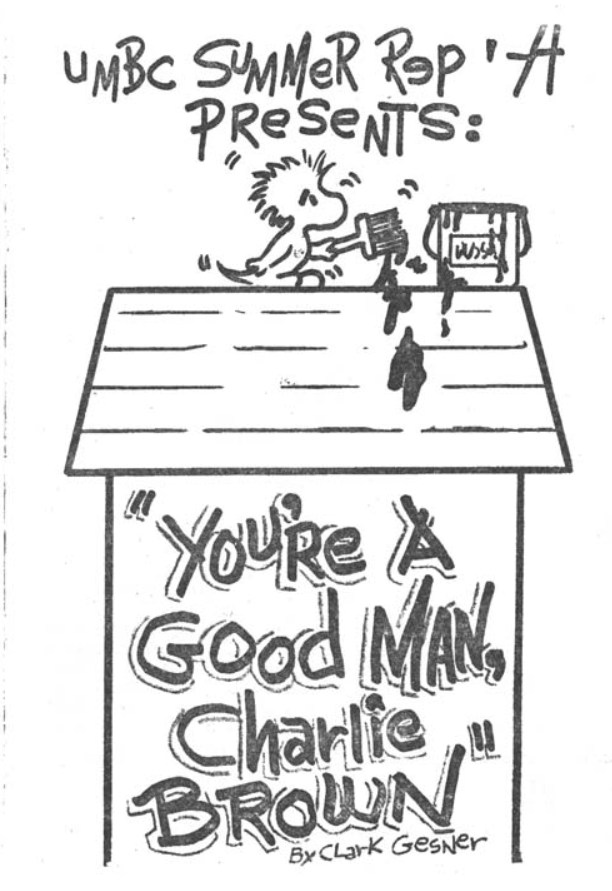
1975
- The Office of Cooperative Education is created at UMBC. This office was the forerunner of today’s Shriver Center, which is established in December 1993.
- UMBC’s library, now known as the Albin O. Kuhn Library and Gallery, is expanded, starting this year, with the east wing. The unfinished concrete exterior, modeled in a Brutalist architectural style, is recognized by the Baltimore Chapter of the American Institute of Architects with their highest honors.
- In December, the men’s cross country team wins its first Mason Dixon conference title, capping a perfect 10-0 season.
1976
- UMBC awards its first Ph.D., in applied mathematics.
- After a spring semester of strong opposition from faculty and students, Chancellor Calvin B.T. Lee resigns his position. Louis L. Kaplan, former chancellor of the University of Maryland’s Board of Regents, is named as the interim chancellor.
- Students protest over tuition fee increases and debunked rumors of cell blocks in the UMBC police building.
- The first homecoming is held in February 1976, with the Almost Anything Goes tournament, where student organizations competed against each other for prizes; a club volleyball tournament; a pep rally; and a basketball game against the Towson Tigers. Homecoming is now held in the fall, featuring comedians such as Jim Gaffigan, Trevor Noah, Bo Burnham, and Ali Wong.
1977
- John Dorsey – Administrative Vice President at the University of Maryland, College Park – is appointed as UMBC’s third Chancellor.
- The men’s soccer team becomes the first UMBC team to compete in a postseason NCAA tournament.
- Men’s basketball earns its first win over a Division I program, defeating Madison College (later James Madison University), 82-80.
- UMBC stages its first opera, Mozart’s “The Marriage of Figaro,” directed by Xerxes Mehta. With a live orchestra of sixteen, the opera is the first cooperative production by the departments of music and theater.
- The Camerata choir is established, with sixteen auditioned singers performing madrigals, folk songs, spirituals, and new works. The choir will go on to perform with the Handel Choir of Baltimore and the Howard County Concert Orchestra.
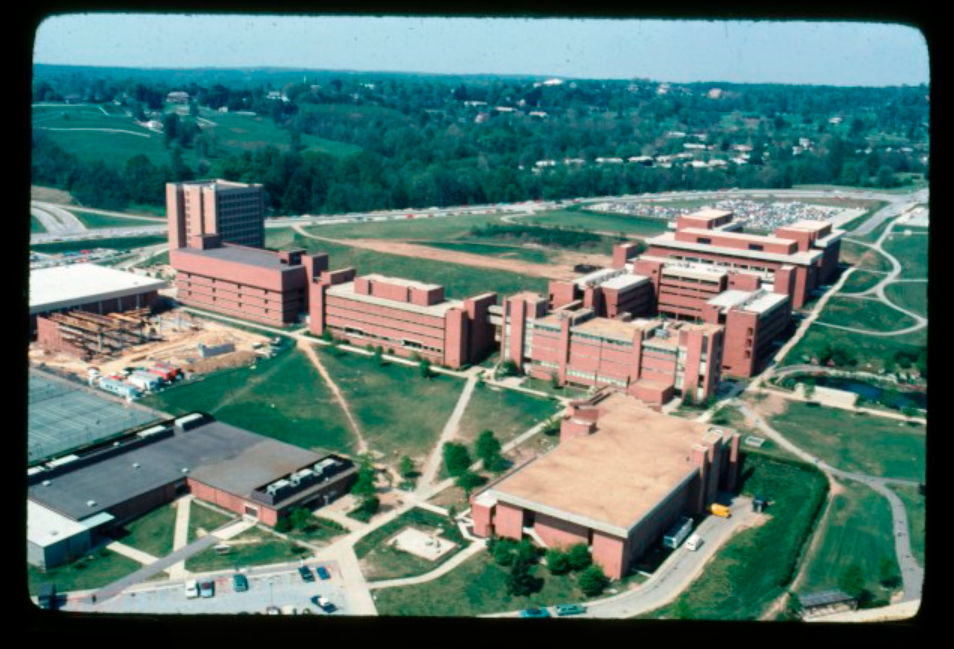
1978
- Despite its growing resident student population, UMBC is still largely a commuter campus. By the end of the 1970s, the university will have over 3,000 parking spaces. The first parking meters are installed in 1978, with a fee of 10¢ per hour.
- UMBC’s Natatorium, an Olympic-sized indoor swimming pool, opens. The UMBC men’s and women’s swimming and diving programs will eventually become juggernauts in the America East division.
- UMBC rents dormitory space from St. Charles College, a division of the St. Mary’s Seminary, in Catonsville, to accommodate an overflow of resident students. The college’s land is later developed as Charlestown Retirement Community.
- The W.E.B. Du Bois Distinguished Lecture Series is started by the division that will become the Africana Studies Department. The series has featured such notables as poet Sterling Allen Brown, Trinidad historian C. L. R. James, poet Sonia Sanchez, civil rights theorist Lani Guinier, and physicist and RIT president Shirley A. Jackson.
1979
- After almost a decade of graduations, UMBC creates an official Alumni Association.
- UMBC’s innovative Option II program, established in 1969 to allow students to develop their own courses of study, becomes the Interdisciplinary Studies department, and then the Individualized Study Program.
- The Retriever men’s basketball squad, ranked number six in the nation, advances to the NCAA Division II tournament quarterfinals, losing at home to Cheyney State.
- UMBC creates a master’s degree program in instructional development.
- UMBC’s production of five plays by Samuel Beckett win three awards at the Kennedy Center American College Theatre Festival. The production is directed by theater professor Xerxes Mehta.
- Students successfully recommend renaming dormitories with the names of Maryland waterways: Susquehanna (Dorm I), Chesapeake (Dorm II) and Patapsco (Dorm III).
Skip To: 1960s I 1970s I 1980s I 1990s I 2000s I 2010s I 2020s
1980s
1980
- The Emergency Health Services department is founded. It is one of the first such programs in the nation.
- UMBC men’s lacrosse team wins the NCAA Division II national championship. It is the university’s only team intercollegiate title. The next year, the university moves to Division I in the sport.
- On March 22, 1980, UMBC students join the 30,000-strong anti-draft demonstration in Washington, D.C. The crowds rally at the Ellipse, march around the White House and gather on the steps of the U.S. Capitol, protesting draft registration requirements and listening to speakers and the group Peter, Paul & Mary. The draft registration requirement had ended in 1975 after the Vietnam War, but President Jimmy Carter reinstated it after the Soviet Union sent forces to Afghanistan.
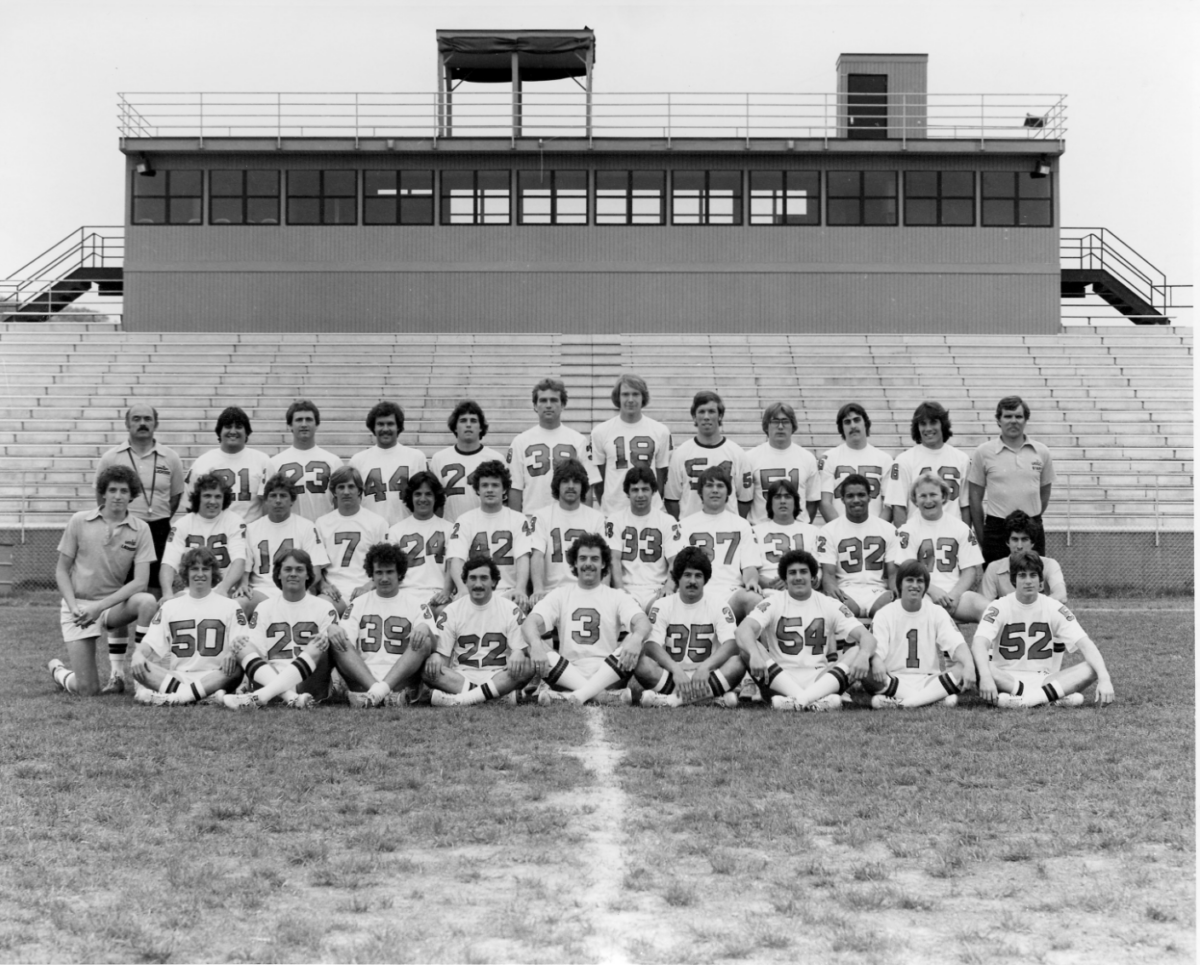
1981
- UMBC celebrates the first Quadmania on Saturday, September 19, 1981, with music by big hair bands Skyhawk and Rave. Hot dogs, beer, popcorn, and soda are sold to raise money for the German club and the Student Government Association. Quadmania has since become a treasured campus tradition, a combination of concert, carnival, and party. Run by the Student Events Board, Quadmania has hosted performers such as Snoop Dogg, Kanye West, Ke$ha, T-Pain, Macklemore & Ryan Lewis, and Gym Class Heroes.
- UMBC creates the first applied molecular biology master’s degree program in the U.S.
- Media reports that Sheldon Knorr, executive director of the Maryland Higher Education Commission, will propose that UMBC be shut down and turned into an industrial park create a campus firestorm. Students, faculty and administrators rally to defend the university.
1982
- The Maryland Institute for Policy, Analysis, and Research is founded to help UMBC social science researchers find, apply for, and manage grants to support their research into aging, equity in health care, and infectious disease control. MIPAR has grown to administer more than $5 million in grants every year.
- One hundred musicians and dancers compete at the first Annual Indian Music and Dance Competition. Józef Pacholczyk, head of the Music Department of UMBC, and Hamid Hossain, founder and director of Academy of Indian Music and Fine Arts, initiates the competition in 1982 as part of UMBC’s ethnomusicology program. The competition now draws musicians and dancers from across southeast Asia, Canada, the United States and Europe.
- The University Center opens, housing a bookstore, the UC Pub, recreation and meeting rooms, SGA offices, and a ballroom. Outside, a patio with tables draws students and staff together. The Retriever Weekly newspaper and the campus radio station have their offices in the University Center.
- The first degrees in computer science and information systems are awarded.
1983
- UMBC starts a K-9 police patrol. Rocky, a German shepherd, serves as the sole dog in the force. The K-9 unit is one of the first of its kind, and other universities write to UMBC for advice in starting their own K-9 forces.
- Dance Department Chair Liz Walton founds Phoenix, a professional dance company-in-residence at UMBC. A former member of the renowned Paul Taylor Dance Company, Walton performed Taylor’s choreography around the world, including a concert with famed Russian ballet dancer Rudolph Nureyev. The Phoenix Repertory Dance Company later becomes the Baltimore Dance Project.
1984
- The Image Laboratory is founded. The laboratory evolves into the Imaging Research Center in 1987, to develop, research, and implement new technologies in digital and media arts. The IRC has now aided in developing 3-D interactive maps of Baltimore and Washington, D.C., in the 1800s, digital depictions of plants’ reactions to their environments, and NASA’s scientific animations of climate atmospheric circulation.
- UMBC hosts an international conference on the literature of Africa.
- UMBC announces its intention to install cable service in all dorms. Students have since watched presidential debates, UMBC basketball team games in NCAA Tournaments, and countless episodes of Jeopardy! from the comfort of their dorms.
- The women’s lacrosse team wins the ECAC Division II championship.
1985
- UMBC’s modern languages and linguistics department is among the first programs to adopt immersion techniques in language learning.
- UMBC’s France-TV Magazine is created in partnership with France 2 network to broadcast news of France in French. The sixty-minute broadcast airs by satellite to hundreds of schools, colleges and universities throughout the country, to help students learn French. The program won awards at the American Film and Video Festival in the 1990s and ran through 1998.
- The first production of Shakespeare on Wheels, “A Midsummer Night’s Dream,” travels across Maryland on an eighteen-wheel truck that converts to a stage. The company performs at sites such as Baltimore City Hall, the Maryland Renaissance Festival, and Wyman Park Dell. The program, conceived and test-run in Africa in the 1960s, was the idea of William Brown, the longtime theater department head. Funded by a grant from the Rockefeller Foundation, the project produced “Hamlet,” its final production, in 1994.
- Karin Wagner ‘85, interdisciplinary studies, finishes eighth in the 10,000 meters at the NCAA Division II nationals at UCLA. Earlier that spring, she finished 17th in the Boston Marathon.
1986
- Chancellor John Dorsey resigns. Bennington College president Michael Hooker is named as UMBC’s fourth chancellor, and works for six years to establish UMBC’s ties to technology and business.
- Men’s and women’s swimming compete in their first intercollegiate competitions and UMBC plays its first contest as a full-fledged NCAA Division I-AAA member, as the men’s soccer team defeated Randolph-Macon.
- In an event sponsored by the Student Government Association, Sen. Thomas Halstead and conservative icon Phyllis Schlafly debate the merits of President Ronald Reagan’s Star Wars anti-missile defense program.
- Author James Baldwin speaks to a ballroom packed with more than 2,000 people. The lecture started an hour late because Baldwin mistakenly went to the University of Maryland, College Park. Students gave the activist and writer a standing ovation when he arrived. He proceeded to offer a revisionist history of America: “It is a peculiar history. We begin after so many lies.”
1987
- The bronze statue of True Grit is commissioned from artist and alumna Paulette Raye ’87, philosophy, using Nitty Gritty, a champion Chesapeake Bay Retriever, as a model. The statue is installed outside the Administration Building and often wears hats, flowers, necklaces, or masks. His nose is rubbed shiny by students seeking a little luck.
- UMBC’s debate team earns a number one ranking in the U.S.
- The Maryland Stage Company, UMBC’s professional theatre company-in-residence, stages its first production, “A Winter’s Tale.” Founded and directed by Xerxes Mehta, the Maryland Stage Company performed plays by authors such as Chekhov, Molière, and Beckett in their fifteen-year run.
- Women’s basketball standout Tammy McCarthy ’87, economics, becomes the first player in Maryland history to score 2,000 career points.
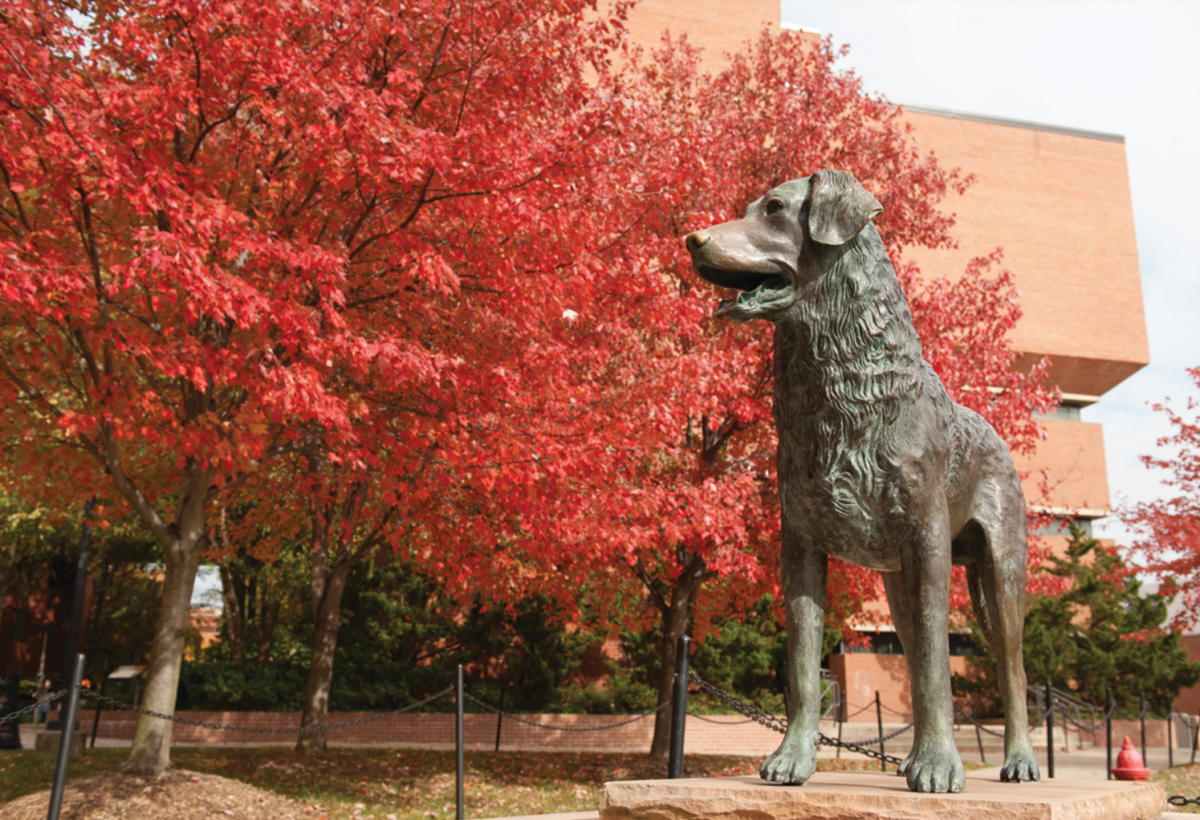
1988
- The Meyerhoff Scholars Program is founded. The effort becomes internationally renowned for its advancement of diversity in the sciences and engineering, and creates a model for pedagogical innovation across UMBC’s campus.
- The Retriever Weekly protests and wins the right to name its own editor-in-chief.
- Winston Griner ’74, biological sciences, is named UMBC’s first Distinguished Alumnus of the Year. After graduating from Meharry Medical College in Nashville in 1978, Griner remained in Tennessee and established a house-call-only practice. He later taught in the biology department, and established a scholarship in his parents’ names for first-year UMBC undergraduate biology students.
- Jell-o-mania debuts on campus, with wrestlers waddling through four hundred pounds of cherry Jell-o. Phi Kappa Psi ran the tournament, with ticket sales raising money for the American Trauma Society.
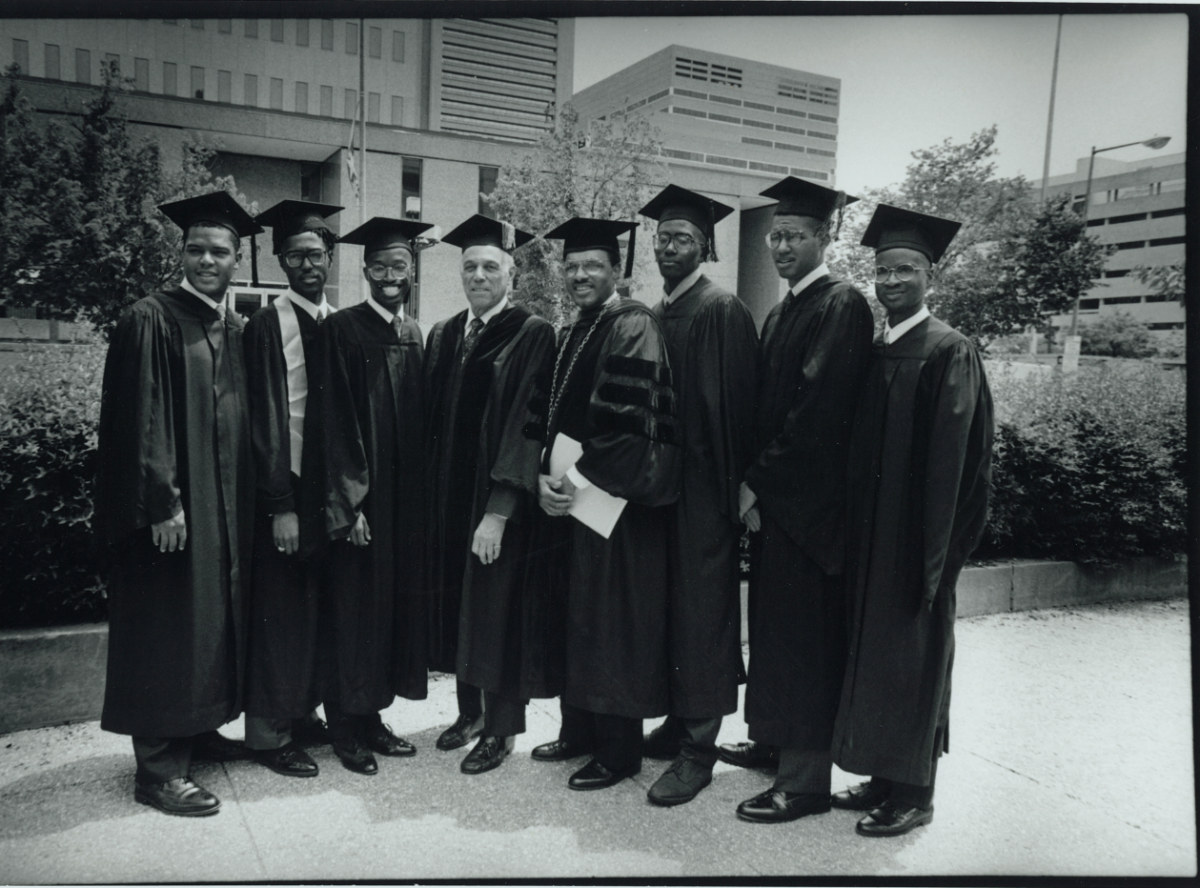
1989
- A proposed merger between UMBC and the University of Baltimore is voted down by the University System of Maryland’s Regents. Two years later, in 1991, a different merger plan for UMBC and the University of Maryland, Baltimore wins approval in Maryland’s House but is not taken up by the State Senate.
- The End of the Edge new music series, created by UMBC music professor Stuart Saunders Smith, makes its debut, and continues for six years, offering concerts in avant-garde jazz, percussion, and recorder.
- Men’s basketball wins the inaugural Baltimore Beltway Tournament, with a victory over Towson State (now Towson University).
- Gymnast Jenny Webster ’89, health science and policy, scores the best all-around performance in UMBC history.
- The Center for Structural Biochemistry, one of six such centers in the world, is established at UMBC with a $1 million grant from the National Science Foundation. The center, which specializes in the structural analysis of biological molecules, houses a laser desorption mass spectrometer and one of the few tandem mass spectrometers located in academic institutions worldwide.
Skip To: 1960s I 1970s I 1980s I 1990s I 2000s I 2010s I 2020s
1990s
1990
- Larry Simmons ’90, economics, breaks the school’s all-time men’s basketball record with his 1,729th point. He would finish with 1,805 career points.
- The first Mini Baja Cars Race Invitational is held by UMBC, with student-designed cars entered by such institutions as Bucknell, Penn State, RPI and Virginia Tech. The Baja races would give rise to UMBC’s Society of Automotive Engineers, a team of students who build and race the nimble, one-person cars on three competitions a year, traveling to dirt tracks across North America.
- The Center for Photonics Technology is established, which later becomes the Center for Advanced Studies in Photonics Research. Researchers work in fields such as optical communications, optical sensing and devices, nanophotonics, biophotonics, and quantum optics.
- UMBC’s total enrollment reaches 10,000 students and sponsored project awards reaches a new milestone – $10 million.
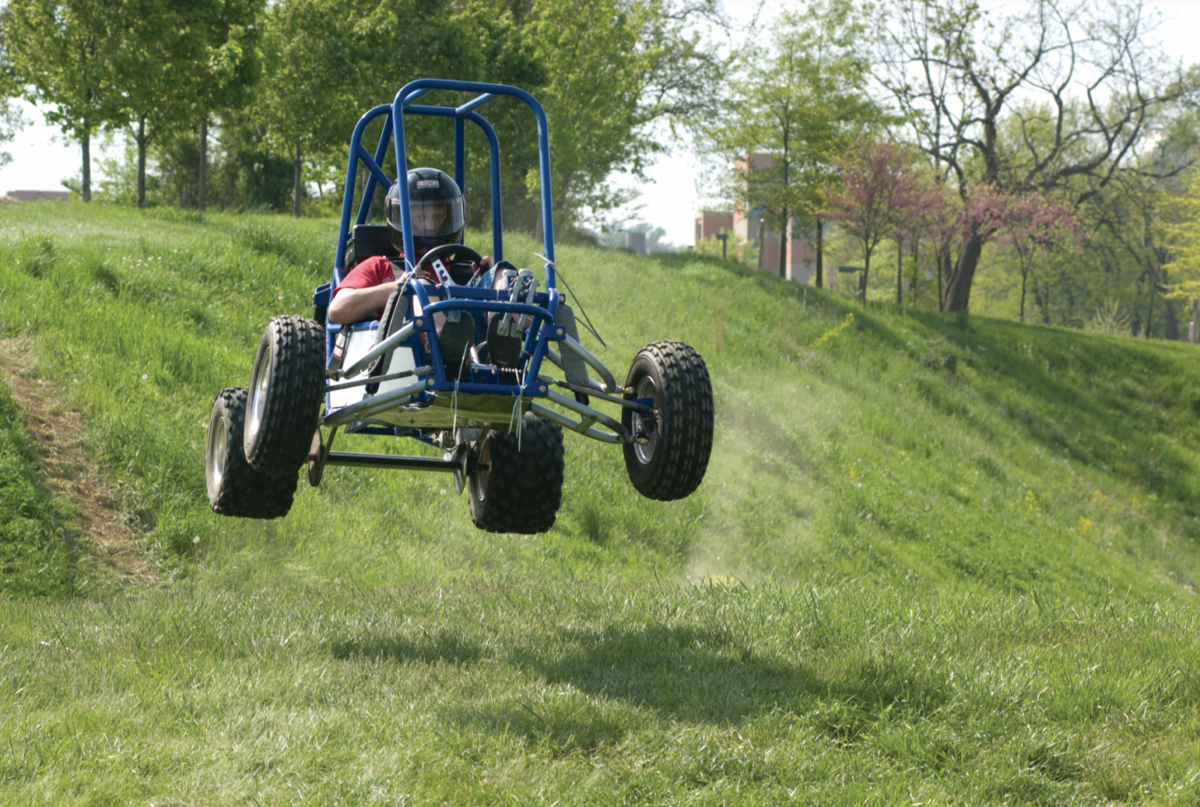
1991
- The university issues its first comprehensive strategic plan – Advancing the Greater Baltimore Region: The Strategic Enhancement of UMBC. The focus of the plan is bolstering the university’s strengths in the sciences, engineering, mathematics and technology – as well as in public policy.
- Three UMBC engineering professors, Jayavant Gore, Jay Humphrey, and Govind Rao, are named Presidential Young Investigators by the National Science Foundation.
- The Geography Laboratory for Spatial Analysis opens. Now under the umbrella of the Center for Urban Environmental Research and Education, the lab seeks to understand human effects on the environment through mapping, analysis, and data visualization.
- Physics professor Larrabee Strow is awarded a 10-year, $2.7 million contract from NASA to develop the Atmospheric Infrared Sounder (AIRS) project to study the earth’s environment. Flying onboard a NASA satellite called Aqua, AIRS gathers data that offers 3D measurements of temperature and water vapor, allowing improved weather forecasting, volcanic plume detection, and climate change monitoring.
- UMBC’s Women’s Center is established. In the early years, the center’s events and workshops focus on women’s health. The center’s mission evolves to read, in 2015, “our current mission intentionally prioritizes politicized values like critical social justice, anti-racism, and feminism.”
1992
- UMBC establishes a College of Engineering.
- Michael Hooker leaves UMBC to become president of the University of Massachusetts system. UMBC’s executive vice president, Freeman A. Hrabowski, III, is named as interim president.
- Baseball becomes UMBC’s first team in its NCAA Division I history to advance to the NCAA regionals.
- Derell Thompson ’92, biological sciences, sets a school record by scoring 43 points in a 113-103 loss in men’s basketball at Towson.
- Commencement outgrows the Field House and moves to the Baltimore Arena, where 1,500 bachelor’s degrees and almost 200 master’s and Ph.D. degrees are awarded.
1993
- Freeman Hrabowski is formally named UMBC’s fifth president.
- The first class of Meyerhoff Scholars graduates, going on to graduate programs at Northwestern, Princeton, Penn State, and the University of Pennsylvania, among others.
- Loren Siebert ’93, computer science, becomes UMBC’s first Marshall Scholar. The scholarship allows him to complete his master’s degree in computer science in the U.K. He also researches technology policy at the London School of Business. With his experience learning Arabic at UMBC as background, he later develops software that will aid in Arabic instruction at thirty universities.
- The Shriver Center, named for Sargent and Eunice Kennedy Shriver, officially opens. The center is founded to promote work for peace and social change through community and academic partnerships. Students can volunteer for service learning projects, work toward a stint in the Peace Corps, and serve as Public Service Scholars.
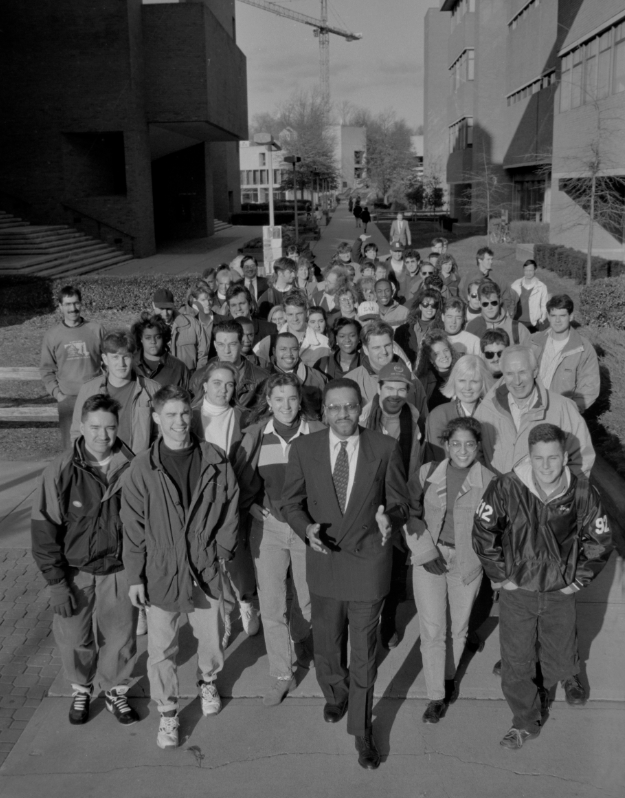
1994
- Brooke Gallagher ’95, biological sciences, competes on the Jeopardy! quiz show and comes in second place, though she was leading at the end of the Double Jeopardy round.
- Missy Quille ’02, sociology, records UMBC’s first “triple-double” with 22 points, 10 rebounds and 10 assists in tournament play (basketball). David Miller ’96, economics, is named Eastern Intercollegiate Most Outstanding Swimmer for an unprecedented second straight year.
- The Discovery Channel’s five-part series, “The Human Brain: Our Universe Within,” included animation produced by the Imaging Research Center. As host scientist Dr. David Suzuki narrated the series, images that the center created, of brain cells and neural networks, float across screens to jazzy music.
- Jack Suess ’81, mathematics, M.S. ’95, now UMBC’s chief information officer and vice president of IT, develops one of UMBC’s first Internet homepages.
- Saturday Night Live cast member Adam Sandler performs on campus, shortly after the release of his 1993 Grammy-nominated comedy album “They’re All Gonna Laugh at You!”
1995
- UMBC rebrands itself as “An Honors University in Maryland,” a new title that reflects the institution’s achievements and aspirations.
- The Joint Center for Earth Systems Technology (JCET) − a cooperative agreement between UMBC and the NASA Goddard Space Flight Center – is established. NASA faculty teach at UMBC, mentor students, and work on research projects with other faculty and students at UMBC. Projects have included research into disappearing polar ice, artificial intelligence’s role in climate research, and atmospheric chemistry studies.
- Trailing in the fifth and deciding game, the Retriever volleyball team rally to win over UNC Greensboro and capture the Big South title.
- The Albin O. Kuhn Library and Gallery complete a $23 million refurbishment and massive addition to the tower and main entrance.
1996
- UMBC marks its 30th anniversary and the opening of the renovated Albin O. Kuhn Library with a Mindfest that celebrates the intellectual life of the university. The first Mindfest activities include a ribbon-cutting ceremony, tours, and a fireworks display over campus. The festival, which would run until the early 2000s, usually featured Chessfest, with the chess team playing a match against another university, diplomatic debates with the Model United Nations team, tours of art and photography exhibitions, musical performances, and children’s activities.
- UMBC holds its first Undergraduate Research and Creative Achievement Day (URCAD), a demonstration of the university’s commitment to excellence in undergraduate education. Graduates who have presented at URCAD have gone on to study the blue-footed booby, particle physics, software research, and opera singing−among other topics.
- Chemistry professor Michael Summers and a team of UMBC students report in Science magazine that they have successfully characterized the HIV-1 capsid protein. Their discoveries allow for enormous scientific advances in HIV research.
- UMBC acquires the former Lockheed-Martin office complex to create techcenter@umbc. An incubator for start-up technology companies, techcenter@umbc has nurtured and housed companies that study everything from software to stem cells to pharmaceuticals.
- UMBC’s chess team hosts the Pan-American Intercollegiate Team Championship in Baltimore and wins.
- UMBC’s Jay Witasick ’93, health administration and policy, debuts with the Oakland Athletics and becomes the first Retriever to play in the major leagues. He pitches for seven teams over 12 years in the majors, as a starting and relief pitcher, including two World Series appearances in 2001 (Yankees) and 2002 (Giants).
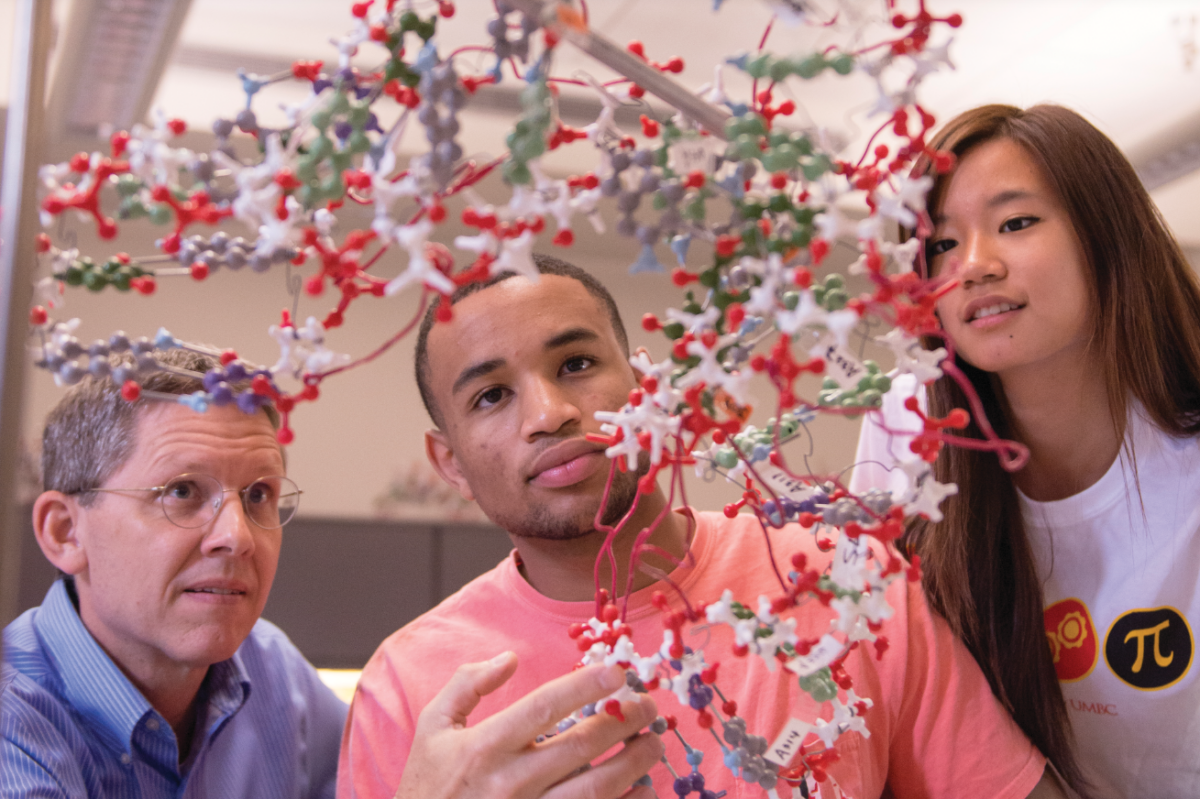
1997
- UMBC begins its first capital campaign with a goal of raising $50 million. By the campaign’s end in 2002, it has raised $66 million.
- After more than a decade of protests and lawsuits centered around the size of the park, and fear of traffic and chemical contamination, construction begins on the bwtech@UMBC research park. The park is the first of its kind in Maryland. The process also yields the 50-acre Conservation and Environmental Research Areas (CERA), a natural space of mature forests, wetlands, and riverbank around the park meant to promote environmental education and preservation.
- UMBC’s theater department performs Russian author Alexander Ostrovsky’s “Diary of a Scoundrel” farce at the national Kennedy Center American College Theatre Festival. The production wins both individual and institutional awards and is called “intelligent, harsh, unpredictable, and stylistically dangerous” by one judge.
- UMBC’s debate team is the first from a U.S. public university invited to join the American Parliamentary Debate Association.
- David Bobb ’02, health administration and policy, earns his third, fourth and fifth All-American awards in track and field. He finishes second in the 100 meters at the outdoor track and field championships and is the fastest American-born sprinter in the collegiate ranks that year.
1998
- UMBC students are inducted into the university’s new chapter of the nation’s oldest academic honor society, Phi Beta Kappa. Inductees hold their golden keys as evidence of excellent grades in broad-based academic studies and belief in freedom of thought.
- The Center for Women in Technology (CWIT) is founded by Joan Korenman, a professor of English and director of the UMBC’s gender and women’s studies department. “We believe that there is a social justice imperative to ensure equity in STEM fields as our society advances technologically,” reads a CWIT statement of belief.
- UMBC women’s tennis wins the second of two consecutive conference championships, and qualify for their first-ever NCAA tournament.
- Men’s swimming captures the Eastern Collegiate Athletic Conference title.
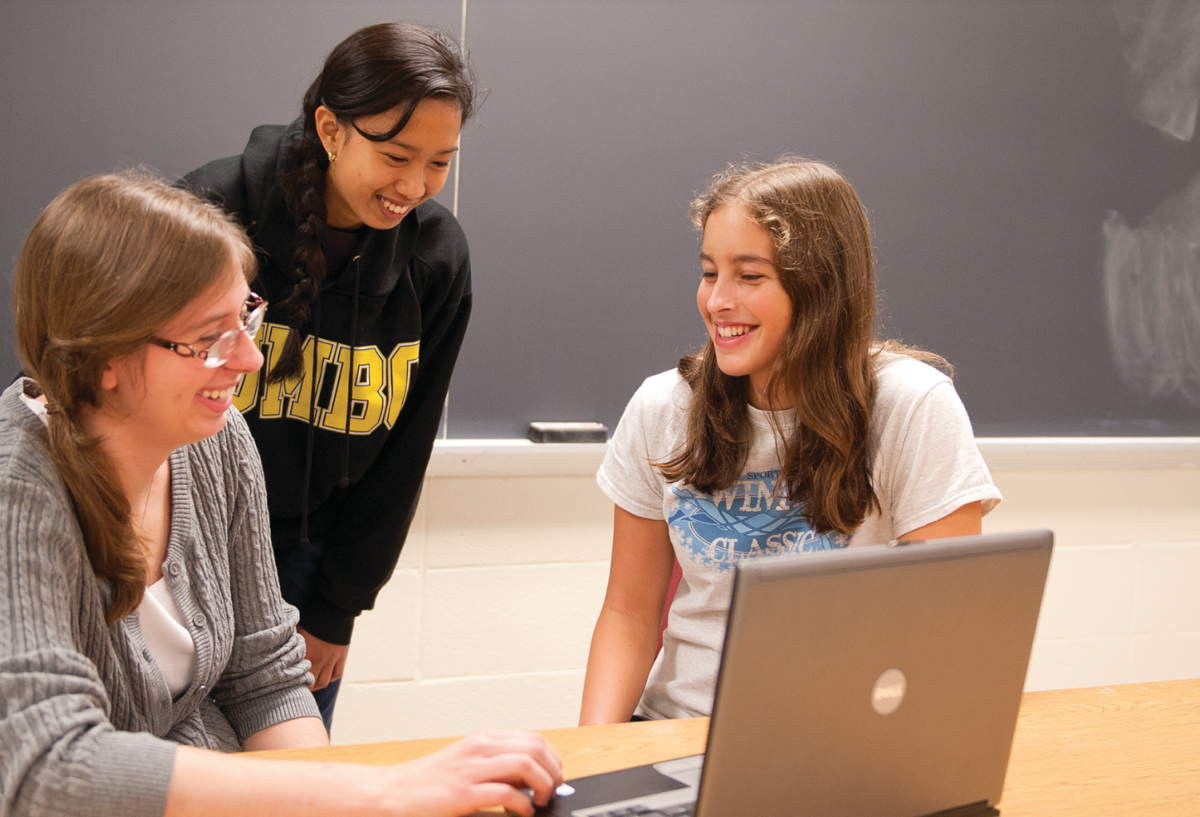
1999
- The men’s soccer team defeats Mount St. Mary’s, 2-1, to capture the Northeast Conference title in front of 1,650 fans at the new UMBC Soccer Stadium. UMBC loses in overtime to top-seeded Duke in the NCAA. The Retrievers finish with the nation’s best winning percentage at 19-1-2.
- Yahoo! Internet Life magazine names UMBC one of “America’s 100 Most Wired Colleges.”
- Tennis player Oscar Lopez ’00, M.S. ’02, mechanical engineering, becomes UMBC’s first-ever First Team Academic All-American.
- The chess team wins the Pan-American Intercollegiate Team Chess Championship for the third time in four years.
Skip To: 1960s I 1970s I 1980s I 1990s I 2000s I 2010s I 2020s
2000s
2000
- UMBC’s Honors University Task Force issues its final report. Among its recommendations are making “the rigorous ways of learning” offered through selective programs at the university available to the wider student body.
- Alex. Brown Center for Entrepreneurship is founded.
2002
- The Commons opens on the site of the former Gym I. The flags of the world later installed on the building’s Main Street celebrate UMBC’s global diversity.
- The UMBC Women’s Center celebrates its 10th anniversary.
- UMBC women’s lacrosse makes its first NCAA tournament appearance.
- Women’s softball beats Liberty, 7-1, in the 2002 NCAA Tournament.
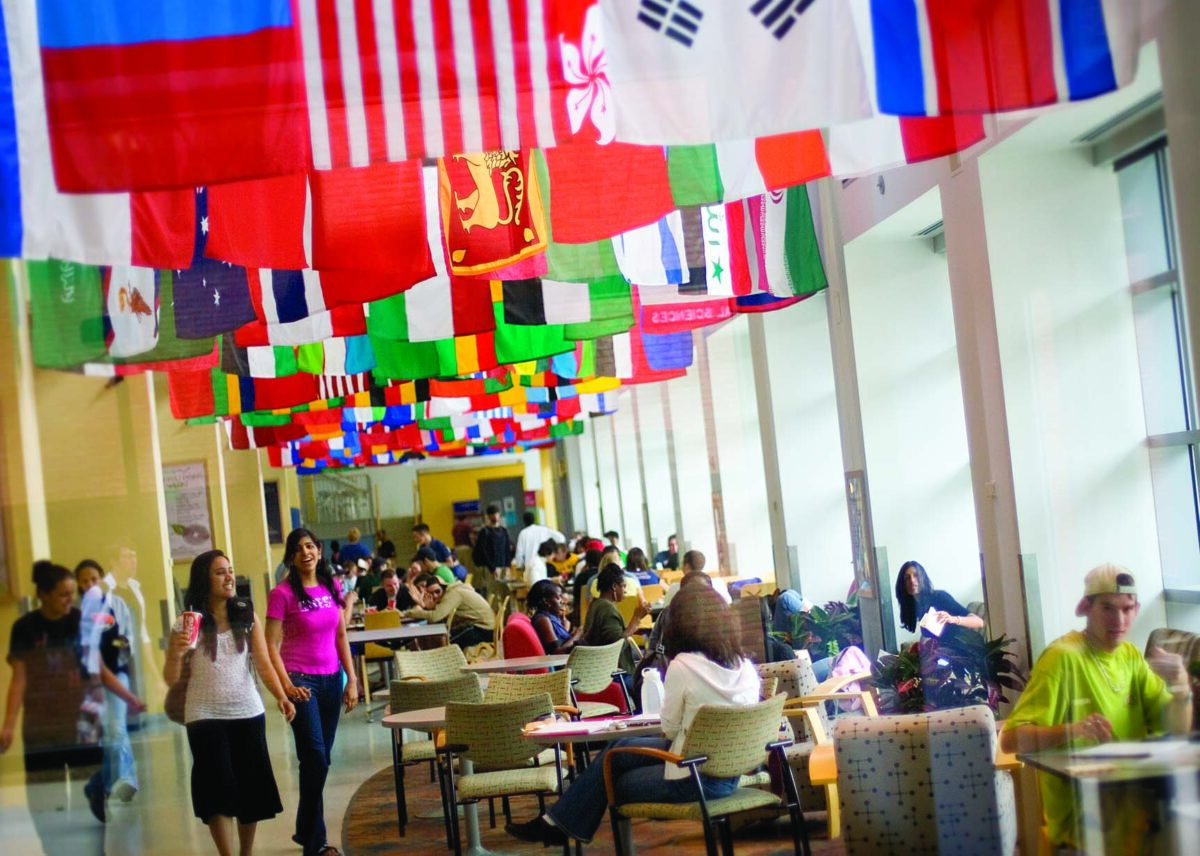
2003
- UMBC Athletics joins the America East conference.
- On the 25th anniversary of the Meyerhoff Scholars Program, UMBC boasts an array of similar programs attracting students across disciplines with more to come in the next decade – including Linehan Artist Scholars, Humanities Scholars, CWIT Scholars, Sondheim Public Affairs Scholars and Sherman Scholars (STEM education).
- An intense period of strategic planning for the university results in Framing the Future: A Strategic Framework for 2016.
2004
- Erickson School of Aging Studies is founded.
- UMBC men’s swimming wins its first America East Championship title.
2005
- The College of Arts & Sciences divides into two new colleges: the College of Arts, Humanities, and Social Sciences (CAHSS) and the College of Natural and Mathematical Sciences (CNMS). The school’s information systems program is folded into the College of Engineering, creating the College of Engineering and Information Technology (COEIT).
2007
- President Hrabowski joins 330 college and university presidents in signing the American College and University Presidents’ Climate Commitment.
- UMBC women’s basketball earns its first NCAA tournament bid.
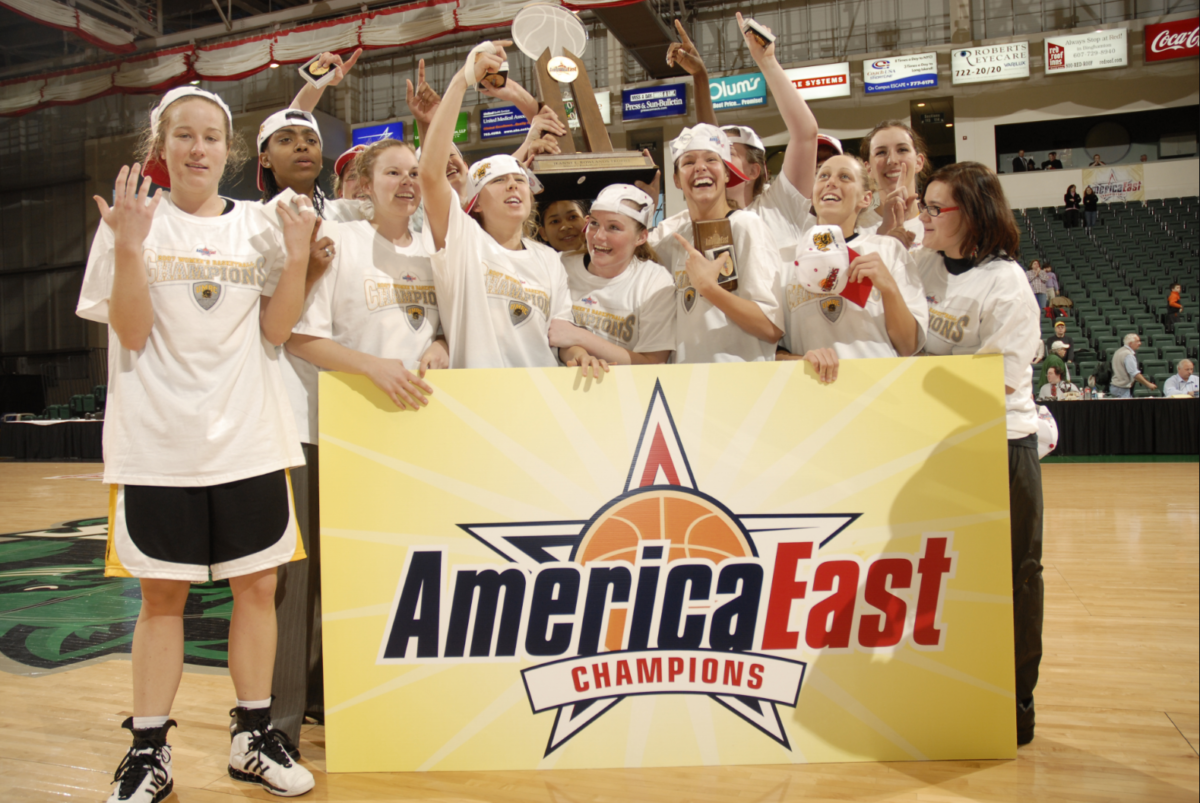
2008
- UMBC’s men’s basketball team wins the America East Conference Tournament and earns school’s first NCAA men’s tournament bid.
2009
- UMBC is named the #1 “Up-and-Coming School” by the editors of U.S. News & World Report’s “America’s Best Colleges” guide. It maintains this lofty ranking for five years.
Skip To: 1960s I 1970s I 1980s I 1990s I 2000s I 2010s I 2020s
2010s
2010
- The College of Natural and Mathematical Sciences (CNMS) Active Science Teaching and Learning Environment – better known as CASTLE – opens its doors in the University Center. The CASTLE extends on the successes of the Chemistry Discovery Center as an engine of innovation in undergraduate learning.
- Ayers Saint Gross creates a new master plan for UMBC that reflects the university’s growth beyond Hilltop Circle and south to the bwtech@UMBC complexes.
2011
2012
- UMBC opens the first phase of its new Performing Arts and Humanities Building with a ribbon-cutting and campus celebration.
- Freeman A. Hrabowski, III, celebrates his 20th anniversary as UMBC’s President by establishing a new fund for innovation in teaching at the university. He is also named as one of Time magazine’s “100 Most Influential People in the World.”
- The university formally commences a new strategic planning process with a series of campus conversations. The process will result in a new strategic plan for UMBC that will coincide with the university’s 50th anniversary in 2016.
- Retriever men’s soccer advances to the second round of the NCAA tournament for the second time in two years.
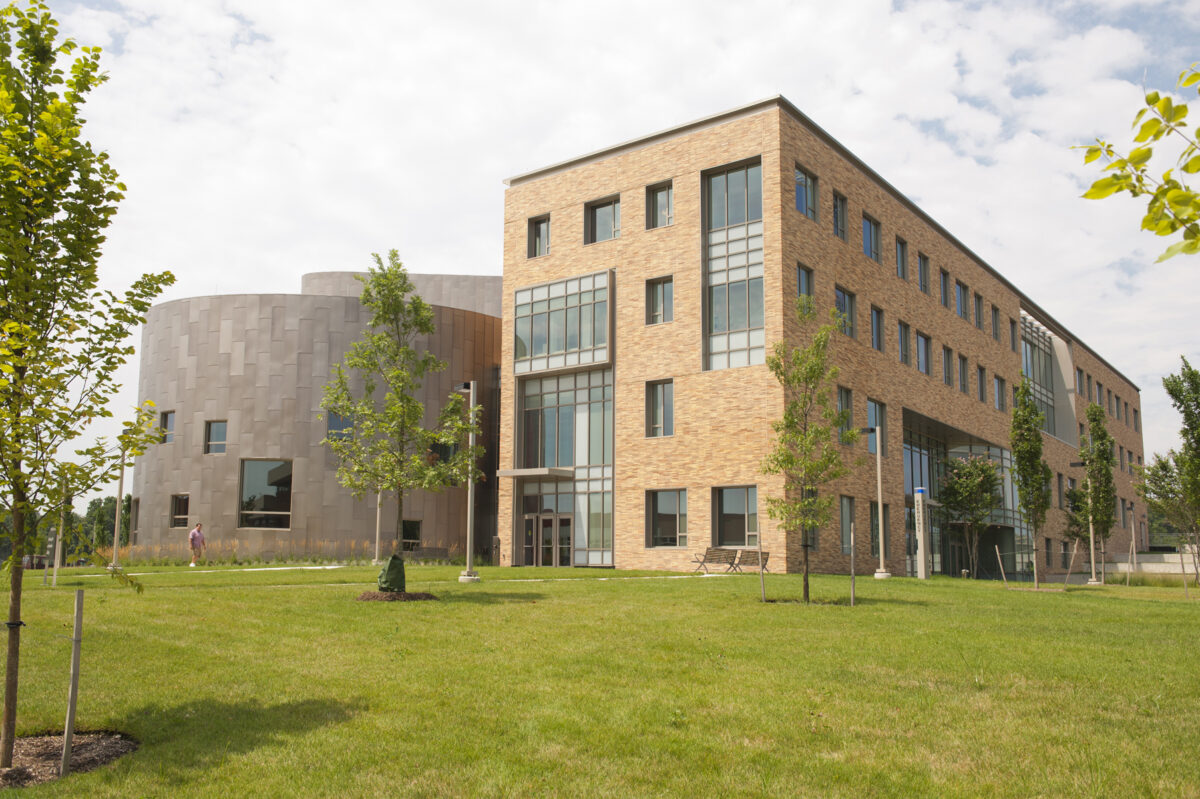
2013
- The College of Arts, Humanities, and Social Sciences (CAHSS) creates a new major in Global Studies, and the College of Engineering and Information Technology (COEIT) introduces a Global Engineering track to its traditional engineering studies.
- UMBC women’s soccer caps a stunning reversal from last place in the conference to first place in a single season with a bid to the NCAA tournament.
2014
- Phase Two of the Performing Arts and Humanities building opens.
- UMBC’s total fall enrollment exceeds 14,000 students for the first time, including 11,200 undergraduates and 2,800 graduates students from 48 states and more than 100 countries.
2015
- UMBC’s endowment reaches more than $76.6 million, the university’s highest level to date.
- The university formally announces plans for a new Event Center and Arena, which will house numerous athletics and community events and bring the UMBC’s commencement back to campus in 2018.
- Hassan Omar ’16, mechanical engineering, becomes the first Retriever to earn individual gold at the America East Cross Country Championships, capturing the title at Stony Brook. Two weeks later, he becomes the first UMBC cross country athlete to compete at the NCAA Division I national championships.
- A UMBC team of students works for three semesters to build Kraken Upcycle, a prehistoric sea monster on wheels made from plastic grocery bags, shredded water bottles, and wire. The machine wins the 17th annual East Coast Kinetic Sculpture Race hosted by Baltimore’s American Visionary Art Museum.
- The National Institutes of Health awards UMBC more than $18 million to create STEM BUILD at UMBC as a national model to broaden the range of students who complete STEM degrees. U.S. News & World Report has featured this new program as a promising, scalable approach to providing mentorship and research experience.
- The Northrop Grumman Foundation invests $3.1 million to support Baltimore students, from kindergarten through college, in partnerships with UMBC and Baltimore City Public Schools. The programs include an expansion of UMBC Cyber Scholars and a new initiative to boost science, technology, engineering, arts, and math education at three city schools.
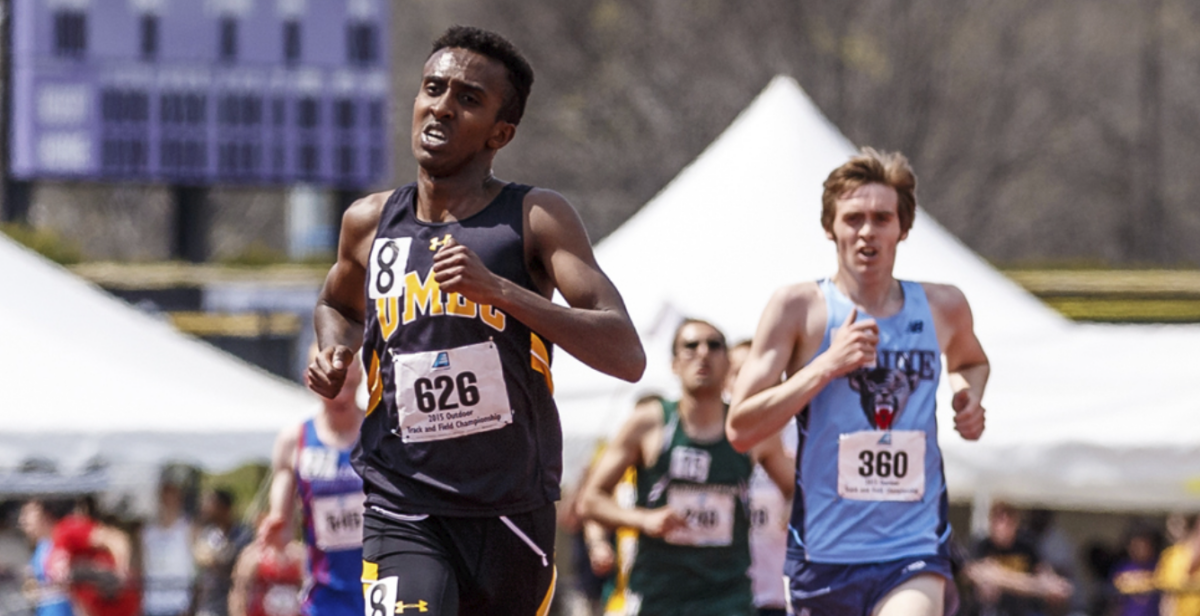
2016
- UMBC celebrates its 50th anniversary with a three-day event on campus. More than 3,300 alumni, students, faculty, and staff from across the campus community came together to attend the events, which included a puppy parade, a costumed Golden Ball, storytelling, a Lego model of the campus, hands-on demonstrations and lectures across disciplines, athletics events, and a fireworks show to cap it off. Take a look at photos from the celebration here, as well as this special photo collage created by the Imaging Research Center.
- The π2 Immersive Reality Hybrid Reality Lab opens in the Information Technology/Engineering Building, with almost 180 degrees of LCD screens. Funded by a grant from the National Science Foundation, the lab allows visitors to put on 3D glasses and dive into a virtual world powered by sensor-driven, body-centric computers.
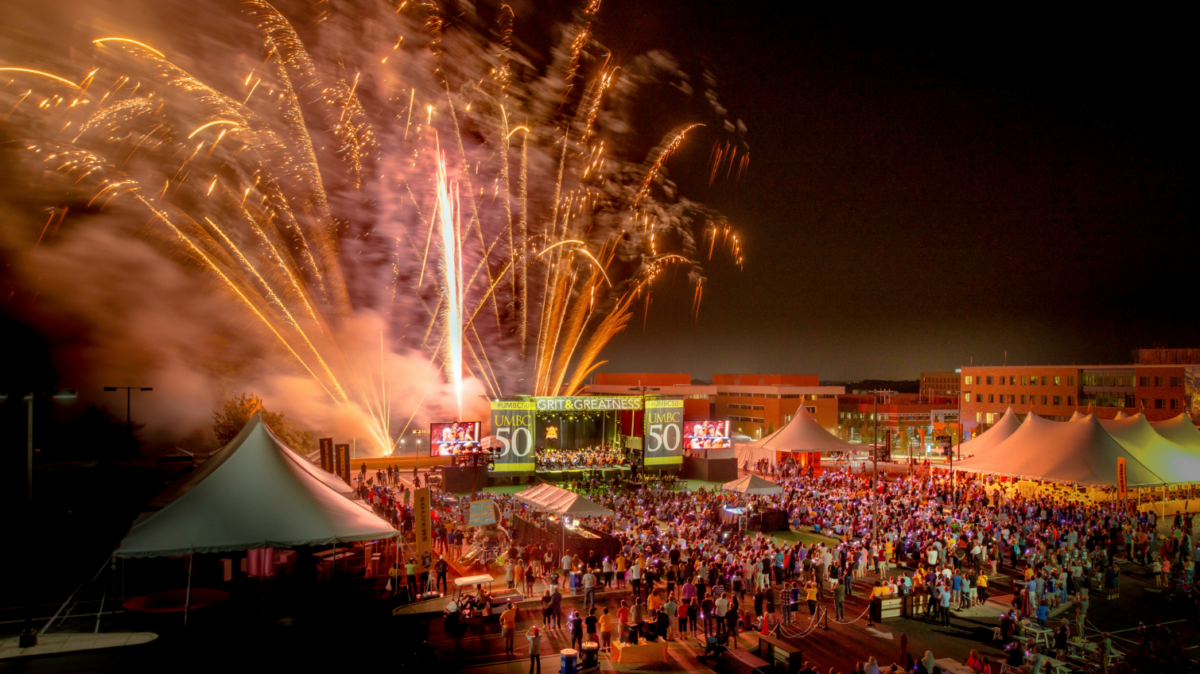
2017
- Emily Escobedo ’17, psychology, concludes her historic career as a Retriever with a bronze medal in the 200 breaststroke at the 2017 NCAA Championships. She later earns her second All-American accolade.
- The Retriever baseball team wins its first-ever America East title and heads to the NCAAs for the first time since 2001.
- Deborah Rudacille, an English professor, receives a Guggenheim Fellowship to pursue a writing project on addiction, as one of just two recipients nationwide for science writing in 2017.
- The UMBC Cyber Dawgs win the top prize in the National Collegiate Cyber Defense Competition.
- The Association of American Colleges and Universities select UMBC as one of 10 institutions nationwide to launch a Truth, Racial Health, and Transformation initiative to prepare “the next generation of leaders to advance justice and build equitable communities.”
- UMBC Mock Trial competes in its first national championship.
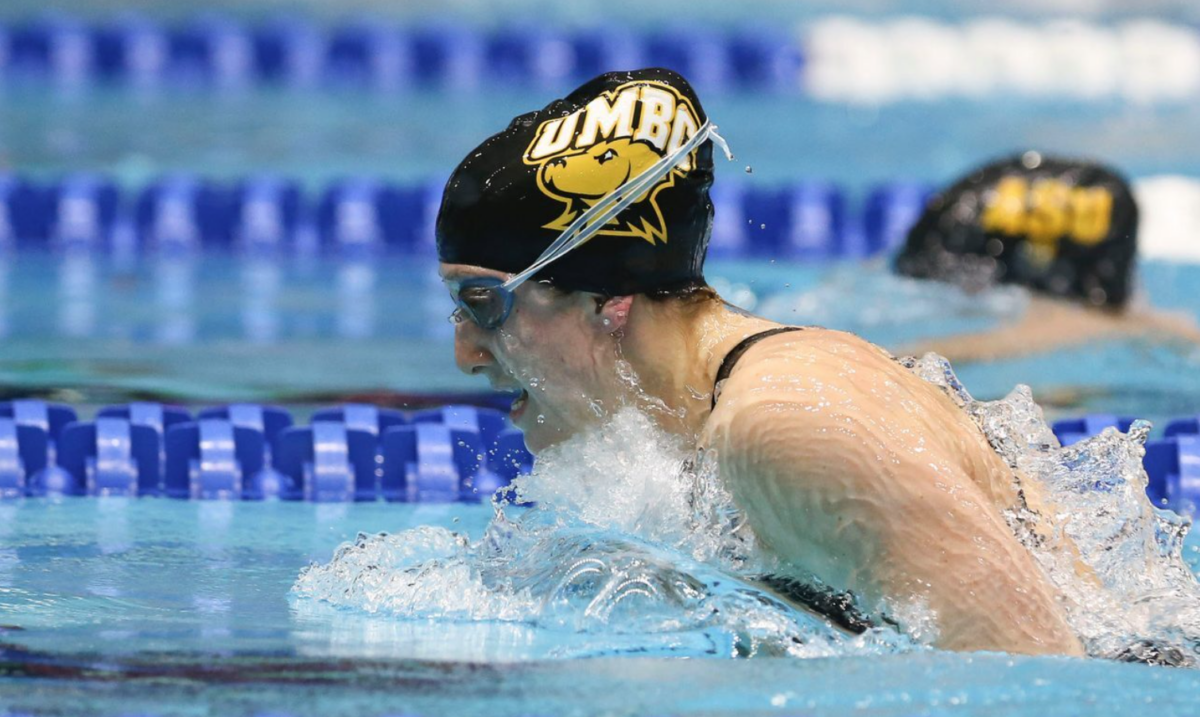
2018
- The National Museum of African American History and Culture hosts a book launch for professor Derek Musgrove’s book Chocolate City, chosen as a best American history book by Kirkus Reviews. Musgrove, associate professor of history, earned his undergraduate degree in history from UMBC in 1997.
- Naomi Mburu ’18, chemical engineering, is named UMBC’s first Rhodes Scholar, and goes on to pursue her doctorate in nuclear engineering at Oxford. Mburu was a Goldwater Scholar and Meyerhoff Scholar, and interned at CERN in Switzerland.
- The Kennedy Center for the Performing Arts’ American College Dance Festival features “Now Elsewhere,” choreographed by Linehan Artist Scholar Maia Schechter ’18, dance.
- UMBC receives a $6 million gift from the Sherman Family Foundation to establish the Center for Early Learning in Urban Communities and expand the Sherman STEM Teacher Scholars Program.
- UMBC dedicates the new Earth and Space Institute, building on decades of collaboration with NASA, including more than $100 million in active, multi-year research partnerships.
- Following protests over the university’s response to alleged sexual assaults, UMBC launches the Retriever Courage initiative. The campus-wide effort has resulted in important conversations and preventative measures around sexual violence/misconduct, and its impact on campus safety and well-being.
- UMBC’s men’s basketball team disrupts March Madness on March 16 at the NCAA Tournament, becoming the first-ever number 16 seed to defeat a number one seed. The team defeated top-ranked University of Virginia, 74-54, before 17,943 screaming fans in the first-round game played in Charlotte, N.C. New York Times reporter Erica Green wrote, “the UMBC Cinderella story transcends athletics, and has been decades in the making.”
- UMBC students win first place in the college division at the 2018 Maryland Cyber Challenge.
- UMBC opens the 172,000-square foot, $85 million Event Center as a home for men’s and women’s basketball and volleyball, and a space to host commencements and cultural events.
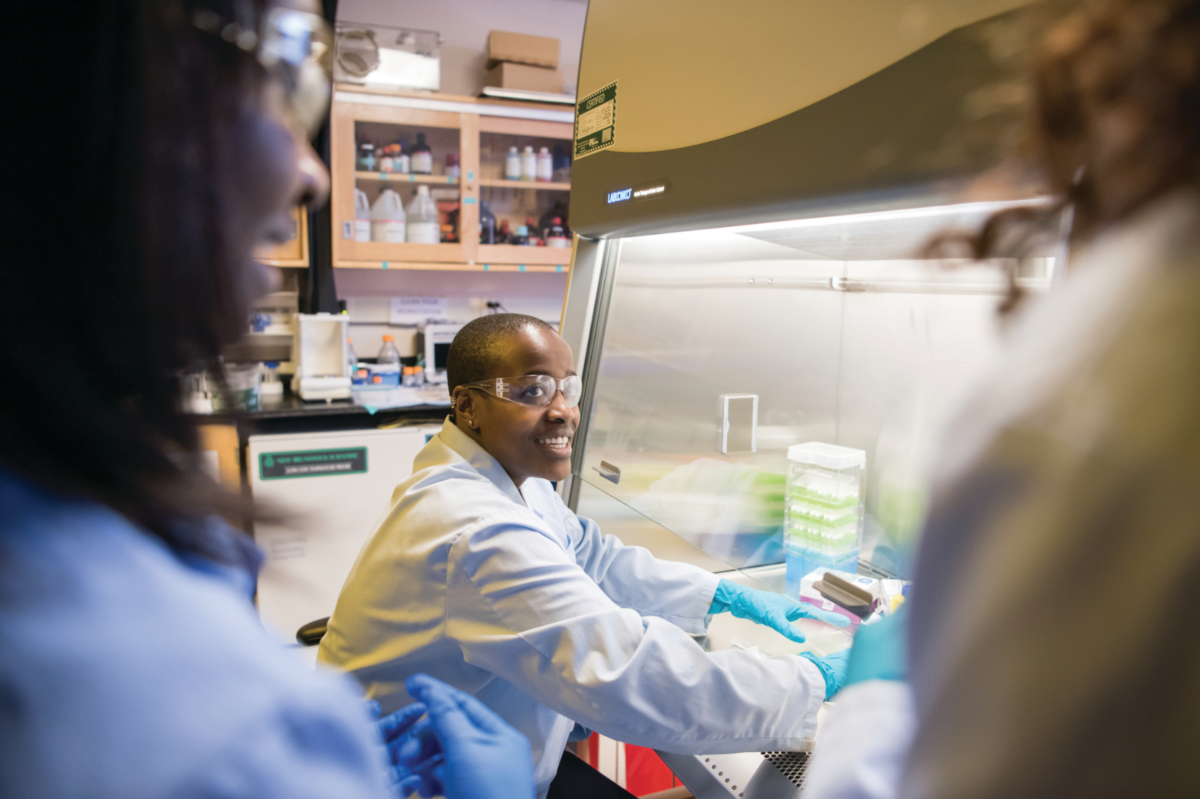
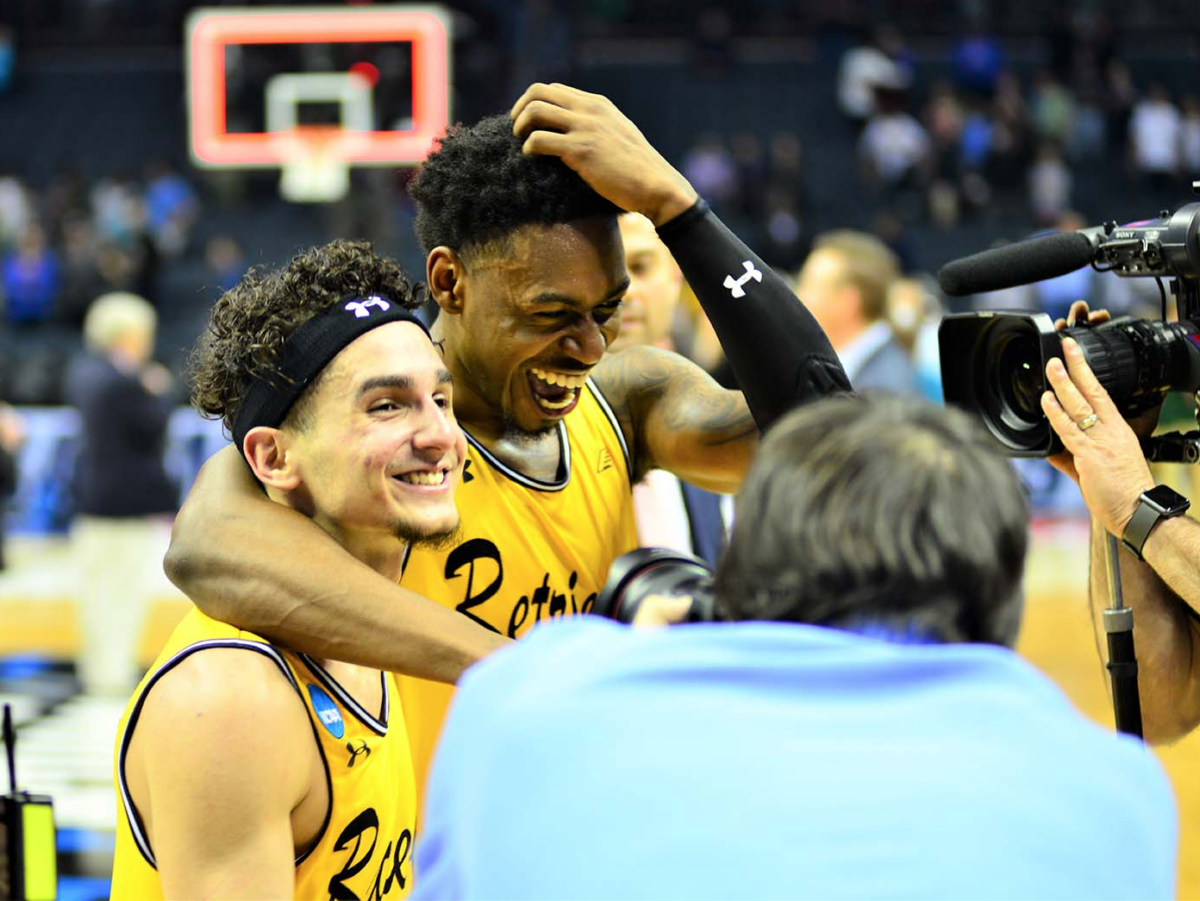
2019
- UMBC establishes the Office of Equity and Inclusion to promote and coordinate the University’s core values of inclusive excellence, equity, and diversity, including education, response, and support related to sexual violence prevention.
- UMBC’s softball team, picked to finish last in America East, defeats Stony Brook, 4-0, to complete a four-game sweep of the league championships and earn their first league title and NCAA Tournament appearance since 2002. First year pitcher Courtney Coppersmith ’22, biochemistry and molecular biology, earns tournament MVP honors, winning all four games on the mound.
- OCA Mocha opens as a full-service coffee shop and community meeting space in Arbutus, after starting as a class project focused on local community engagement.
- Sarah Stellwagen, assistant research scientist in biology, publishes the first-ever complete sequence of two genes that allow spiders to produce glue—a sticky, modified version of spider silk that keeps a spider’s prey stuck in its web.
- A NASA-funded satellite that UMBC’s Vanderlei Martins, physics, developed in collaboration with Space Dynamics Laboratory launches from NASA’s Wallops Flight Facility to the International Space Station in November. The Hyper-Angular Rainbow Polarimeter (HARP) was developed in UMBC’s Earth and Space Institute.
- Mustafa Al-Adhami, M.S. ’15, Ph.D. ’20, mechanical engineering, wins the national Three-Minute Thesis competition with his explanation of his research into rapid detection of bacteria in blood. He developed a test that checks, within an hour, if a patient has an infection.
- Adrienne Jones ’76, psychology, makes history when she is sworn in as Maryland Speaker of the House, the first African American and first woman to serve in this role.
- UMBC’s police department welcomes Chip, the new campus comfort dog, in September. Along with her handler, Sergeant Jamie Cheatem, Chip helps to provide comfort during midterms, finals, and high-stress situations.
- UMBC men’s and women’s swimming and diving are both crowned 2019 America East champions.

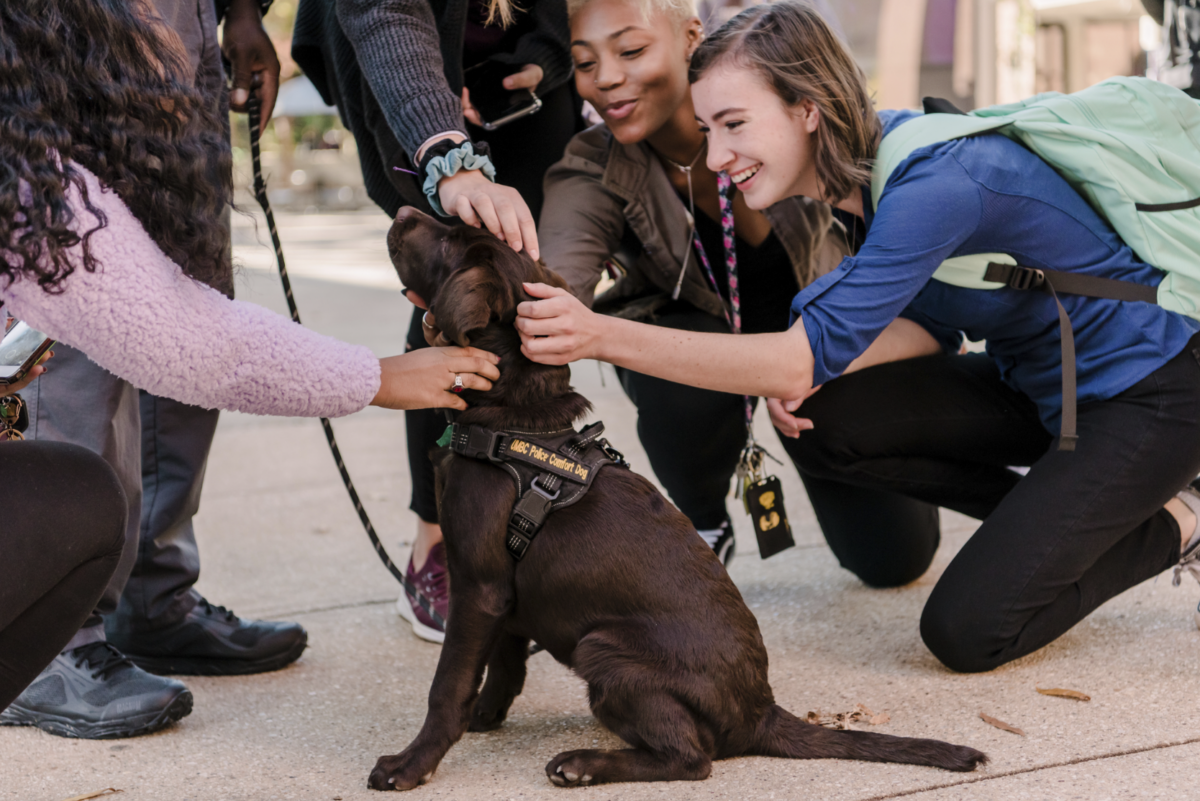
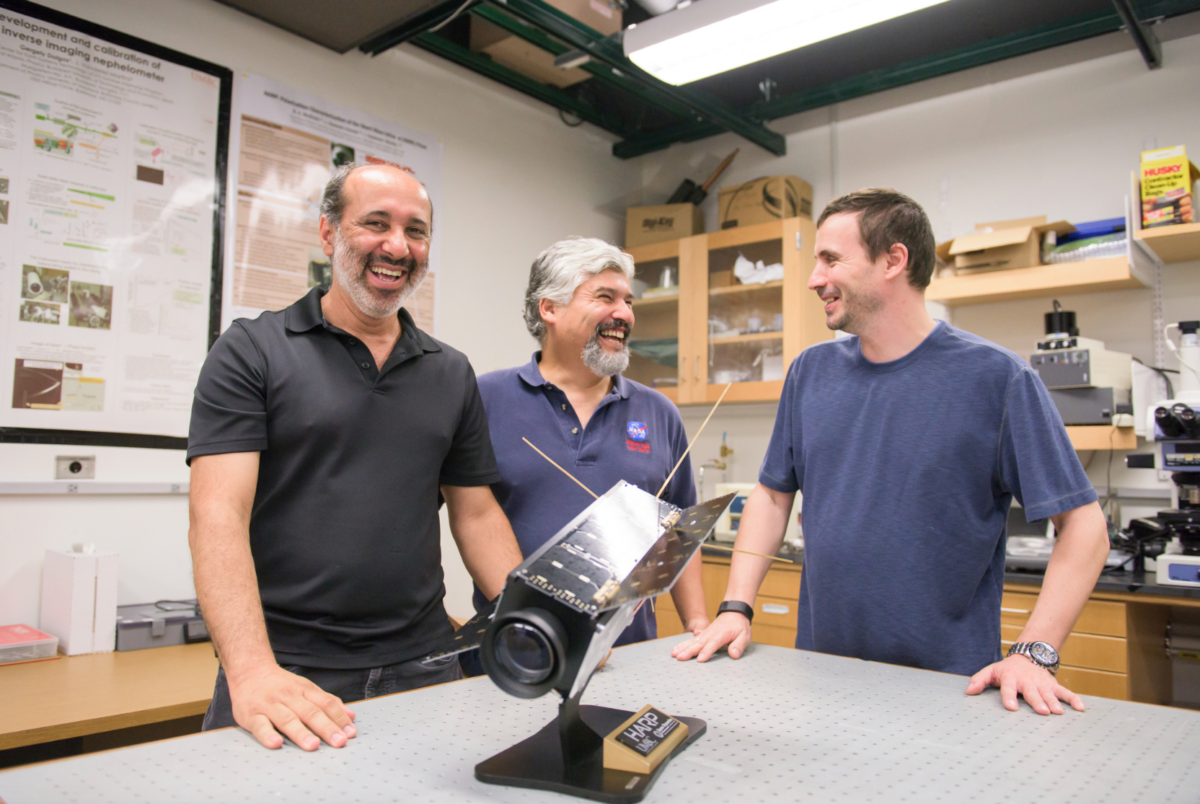
Skip To: 1960s I 1970s I 1980s I 1990s I 2000s I 2010s I 2020s
2020s
2020
- UMBC’s Cyber Dawgs win the U.S. Department of Energy’s fifth annual national CyberForce Competition, as well as the Maryland Cyber Challenge.
- UMBC receives $2.8 million from the National Science Foundation to create an inclusive environmental science master’s program focused on addressing the Baltimore Harbor’s environmental challenges.
- “Girls on a Dirt Pile,” written by Susan McCully and directed by Eve Muson, both of UMBC’s theatre department, appears at the American College Theatre Festival.
- UMBC’s second Rhodes Scholar, Sam Patterson ’21, math, economics, and statistics, will pursue a master’s degree in the Nature, Society, and Environmental Governance program at Oxford University. Interested in urban transportation changes, Patterson is a Meyerhoff Scholar and alumnus of the Honors College. He conducted research supported by the Alfred P. Sloan Foundation at Harvard University with the Harvard Leadership Alliance and at the University of Chicago’s Booth School of Business.
- UMBC’s men’s and women’s swimming and diving teams win the 2020 America East championship and second-place, respectively. Ilia Rattsev ’20 biological sciences, becomes the first America East swimmer to sweep the freestyle sprints in three consecutive years.
- UMBC history professor Marjoleine Kars’ book, Blood on the River, a chronicle of the 18th-century mutiny of enslaved people in the Dutch colony of Berbice, now Guyana, is featured as one of NPR’s best books of 2020.
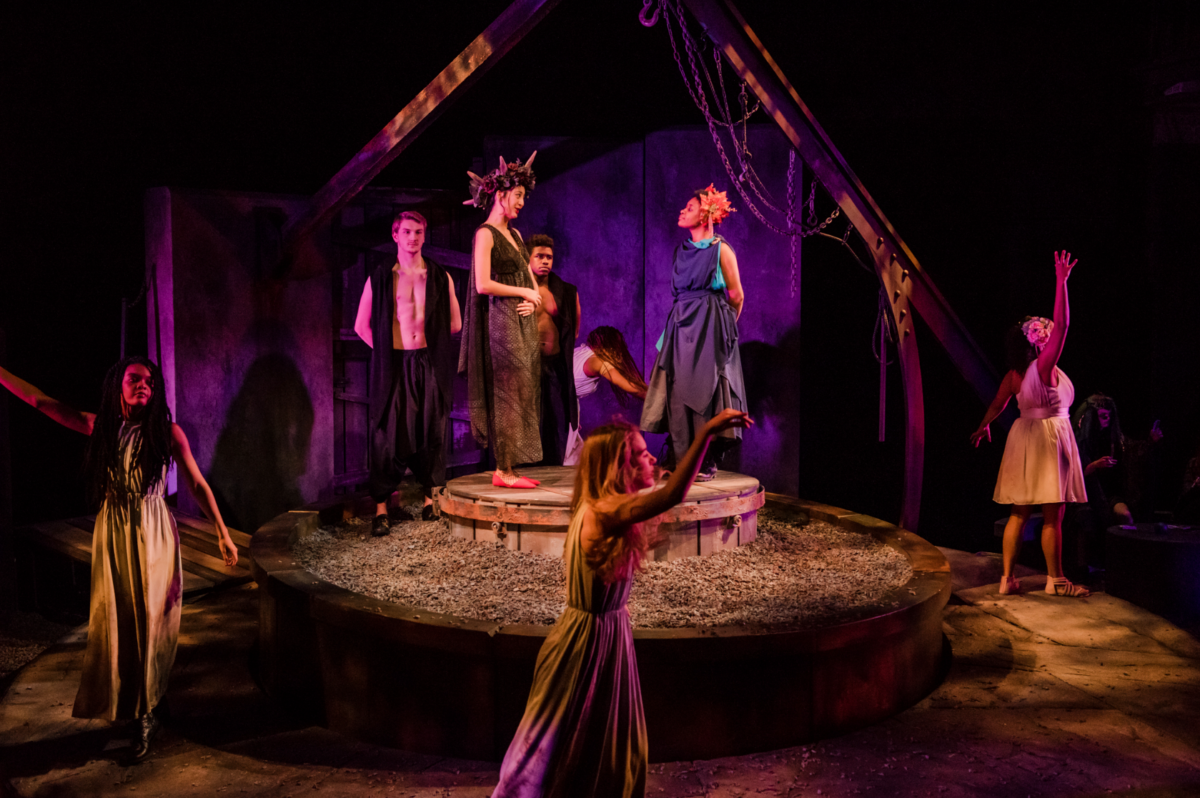
2021
- In the midst of the pandemic, several faculty lead COVID-19-related research and community-engaged projects. Topics included rapid COVID-19 testing, predicting hospitalization risk, speeding detection through machine learning, antiviral treatments, COVID-19-related discrimination against Chinese Americans, archiving pandemic experiences, and expanding internet access in Baltimore during COVID-19.
- Kizzmekia Corbett ’08, M16, biological sciences and sociology, serves as scientific lead for the team that developed the National Institutes of Health-Moderna vaccine against COVID-19 and is named a TIME Hero of the Year for her work. Kaitlyn Sadtler ’11, biological sciences, leads an NIH study to estimate how many people in the U.S. have been infected with COVID-19, including asymptomatic people.
- NASA awards $72M for a new UMBC-led Earth science research partnership.
- UMBC is the lead institution on a 5-year, $13M NSF grant using data science, machine learning, and artificial intelligence to analyze enormous volumes of climate data,
- UMBC’s Center for Urban Environmental Research and Education (CUERE) receives a $4.8M Critical Zone Collaborative Network grant from the National Science Foundation to lead a nine-institution team in research on the health of urban ecosystems.
- UMBC receives a $7.7M Undergraduate Research Training Initiative for Student Enhancement (U-RISE) NIH grant to support the next generation of STEM leaders through mentoring, community-building, and financial support.
- UMBC leads a partnership with Morgan State University and the University of Maryland, College Park, funded by $3M from the Andrew W. Mellon Foundation, to diversify senior leadership in higher education.
- The UMBC Cyber Dawgs take first place in the Mid-Atlantic Collegiate Cyber Defense Competition.
- In August, President Freeman Hrabowski announces his plans to retire at the end of the academic year, wrapping up more than 30 years of transformational leadership at UMBC.
- Mock Trial defeats Yale to win first national championship.
- UMBC volleyball successfully defends its America East title and advances to the NCAA championship.
- The UMBC Event Center is officially named the Chesapeake Employers Insurance Arena as a partnership between UMBC and Chesapeake Employers’ Insurance Company.
- UMBC is the only North American university selected to receive APLU’s Gold Award for global engagement strategy.
- Read UMBC’s Top Stories of 2021
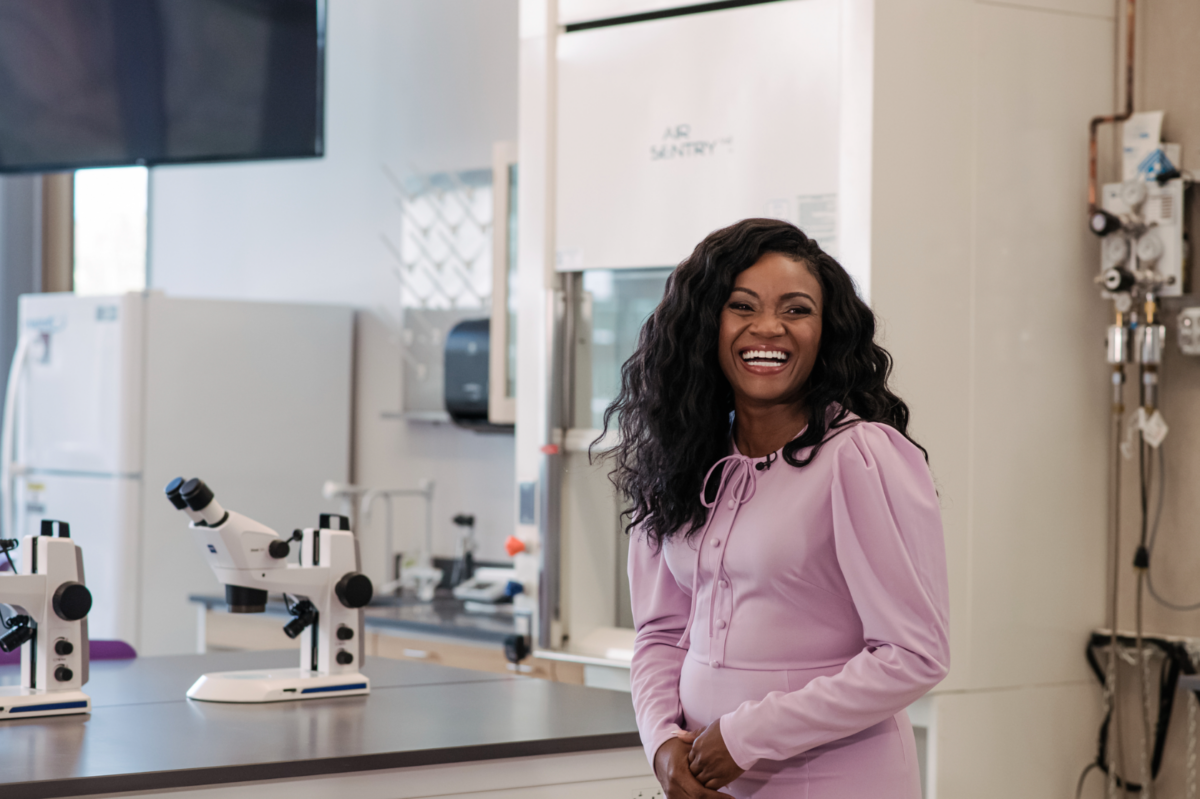
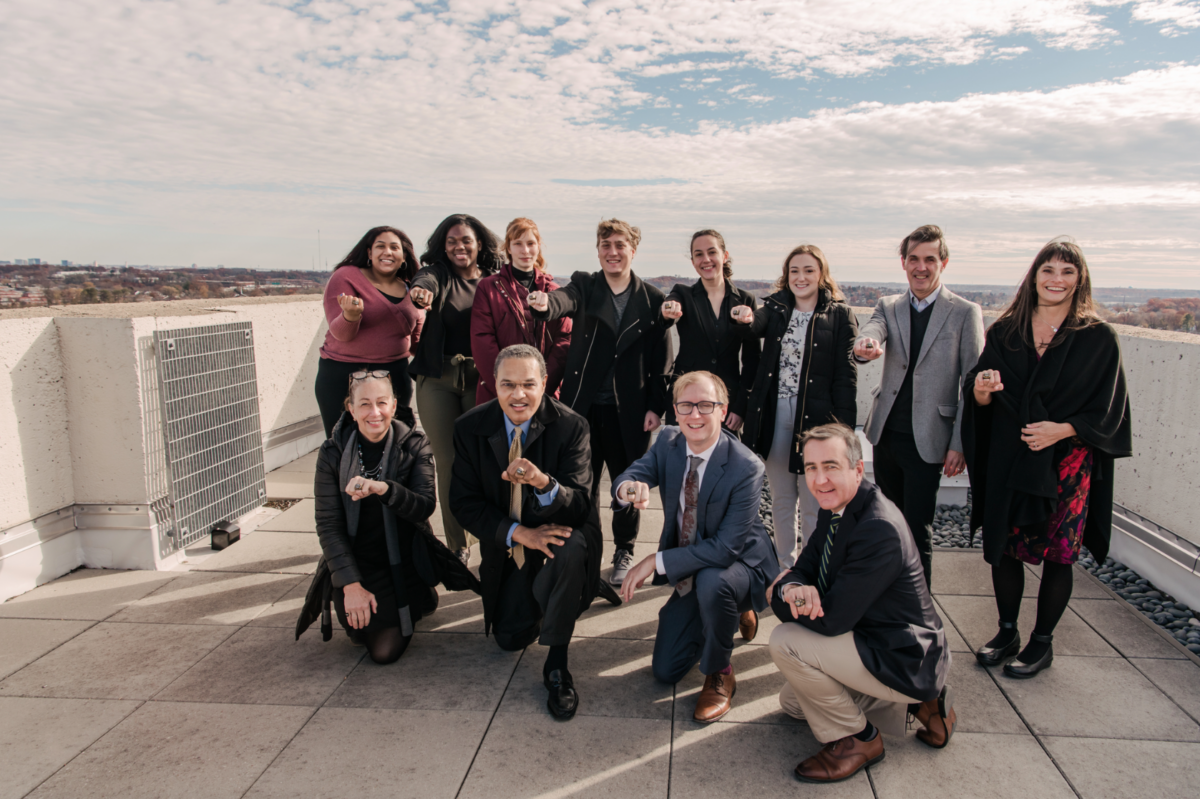
2022
- UMBC ascends to the nation’s highest level as a research university, “R1” through the Carnegie Classification of Institutions of Higher Education.
- The Sherman Family Foundation gives $21 million to support UMBC’s commitment to PreK-12 research, teaching, and learning.
- Softball player Courtney Coppersmith ‘22, biochemistry and molecular biology, is named America East “Woman of the Year,” the first in UMBC history.
- The Howard Hughes Medical Institute launches the $1.5 billion Freeman Hrabowski Scholars program to support diversity and innovation in biomedical research.
- UMBC celebrates the transfer of the Spring Grove Hospital site to support the university’s long-term growth.
- Derek Musgrove ‘97, history, associate professor of history, is named an Andrew Carnegie Fellow for research on Black political movements in the U.S.
- Dr. Valerie Sheares Ashby begins her tenure as UMBC’s sixth president. Sheares Ashby is the first woman to serve in this role. She previously served as dean of Duke University’s Trinity College of Arts & Sciences.
- Read UMBC’s Top Stories of 2022
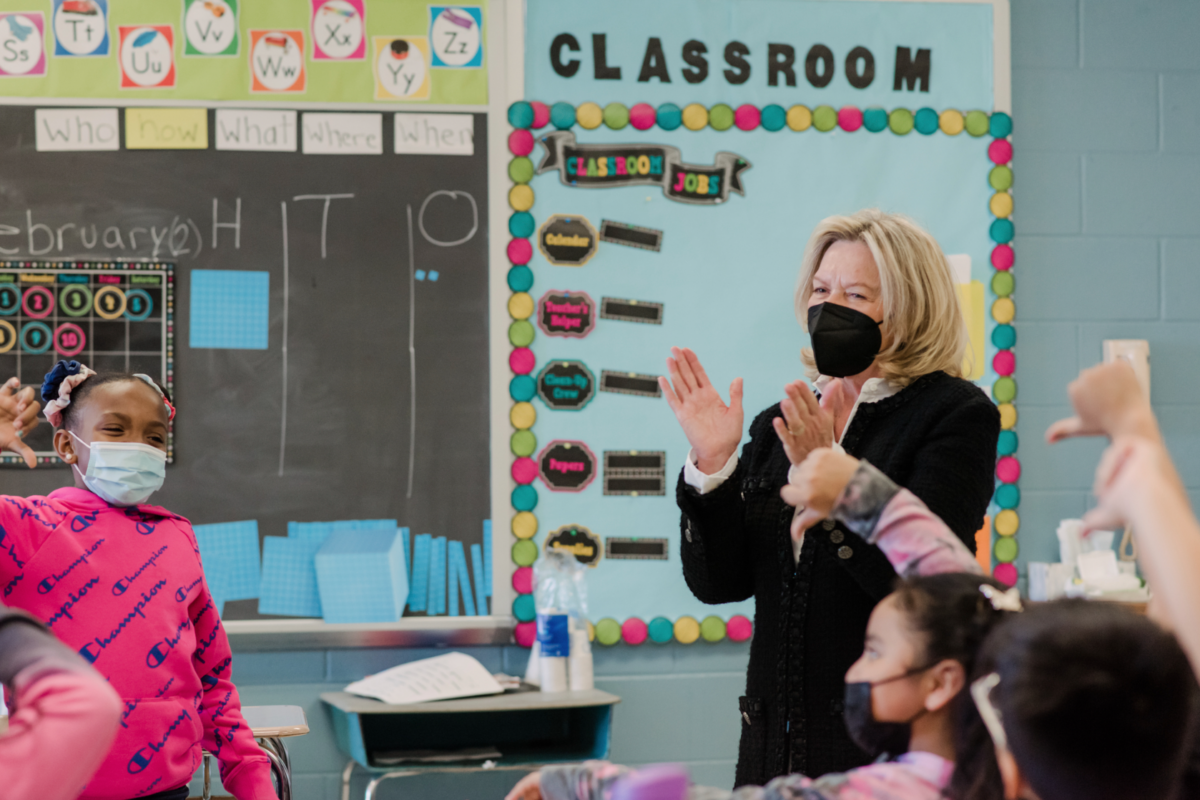
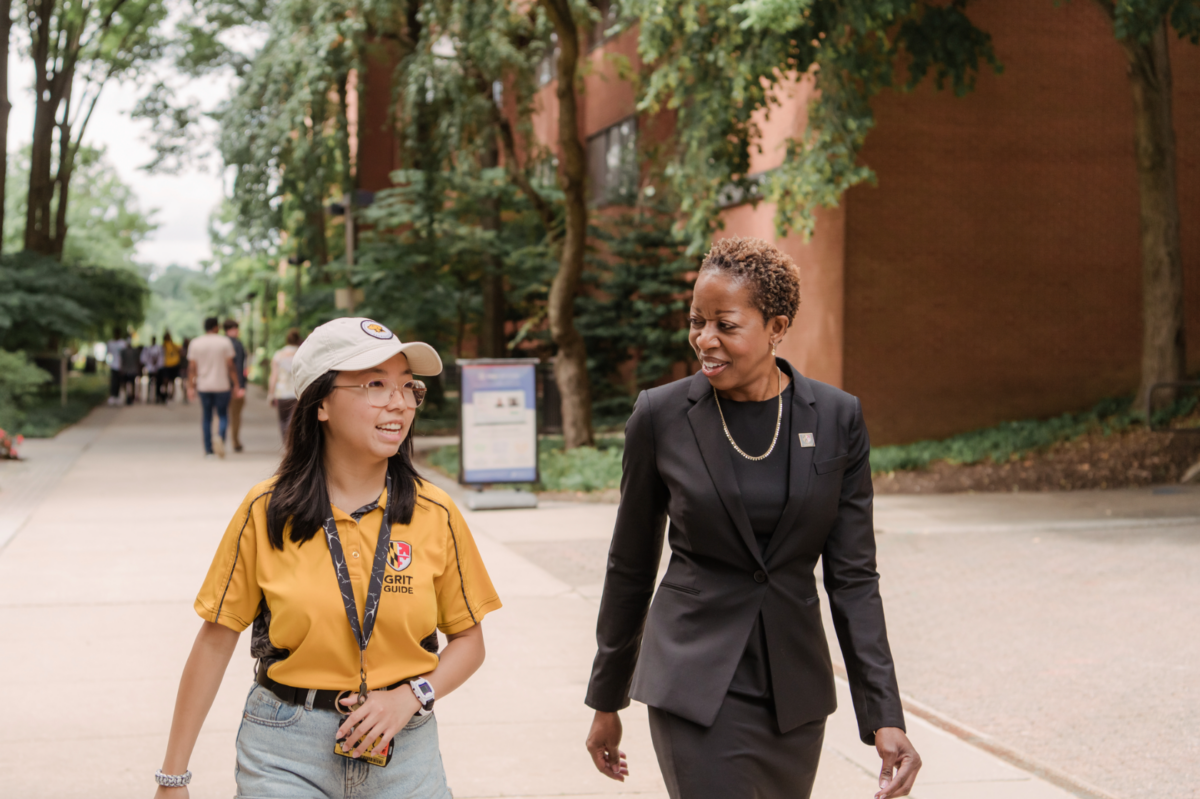
Credits
This timeline of UMBC history is a living document, meant to change over time. Special thanks for help in creating this presentation (providing charts, identifying source materials and suggesting interpretive threads) are due to:
- George LaNoue, professor of political science and public policy, and the author of the book, Improbable Excellence: The Saga of UMBC (Carolina Academic Press).
- The staff of the Special Collections Department at the Albin O. Kuhn Library, especially Tom Beck (chief curator, now retired) and Lindsey Loeper ’04 (university archivist).
- The staff of UMBC’s Office of Institutional Research (OIR), especially Michael Dillon (associate provost) and Connie Pierson ’90, M.A. ’92 (assistant director).
- UMBC’s Office of Institutional Advancement, especially Jim Lord ’99 (design director), Jenny O’Grady (editor), and Marlayna Demond ’11 (photographer).
- UMBC’s Department of Planning and Construction Services, especially Joe Rexing (university architect, now retired) and Julianne Simpson (assistant director for planning).
The timeline was originally conceived and written by Richard Byrne ’86, Office of Institutional Advancement, with contributions from Steve Levy ’85, Athletics. It continues to be expanded by university communications staff, pulling from a variety of university sources.
